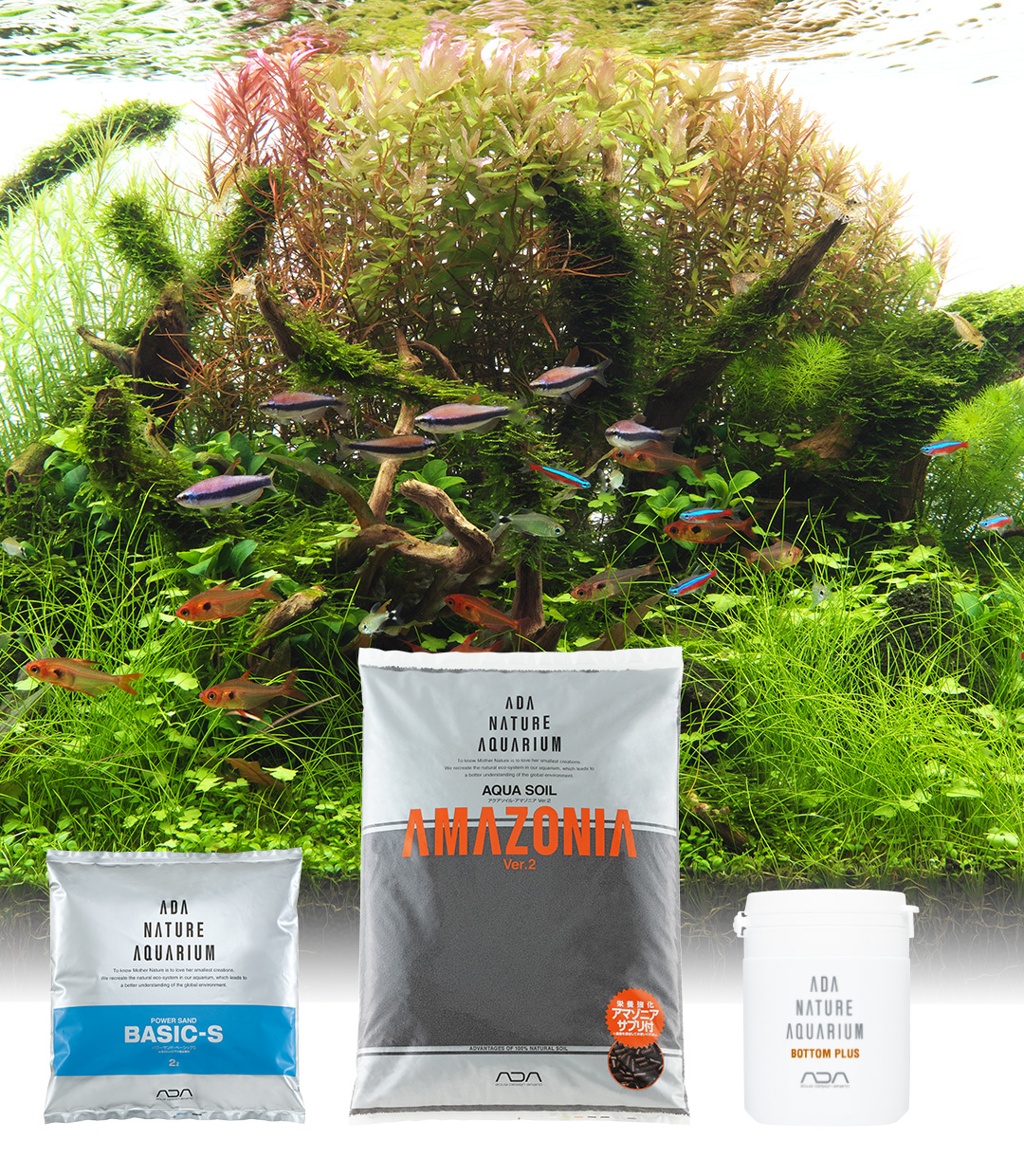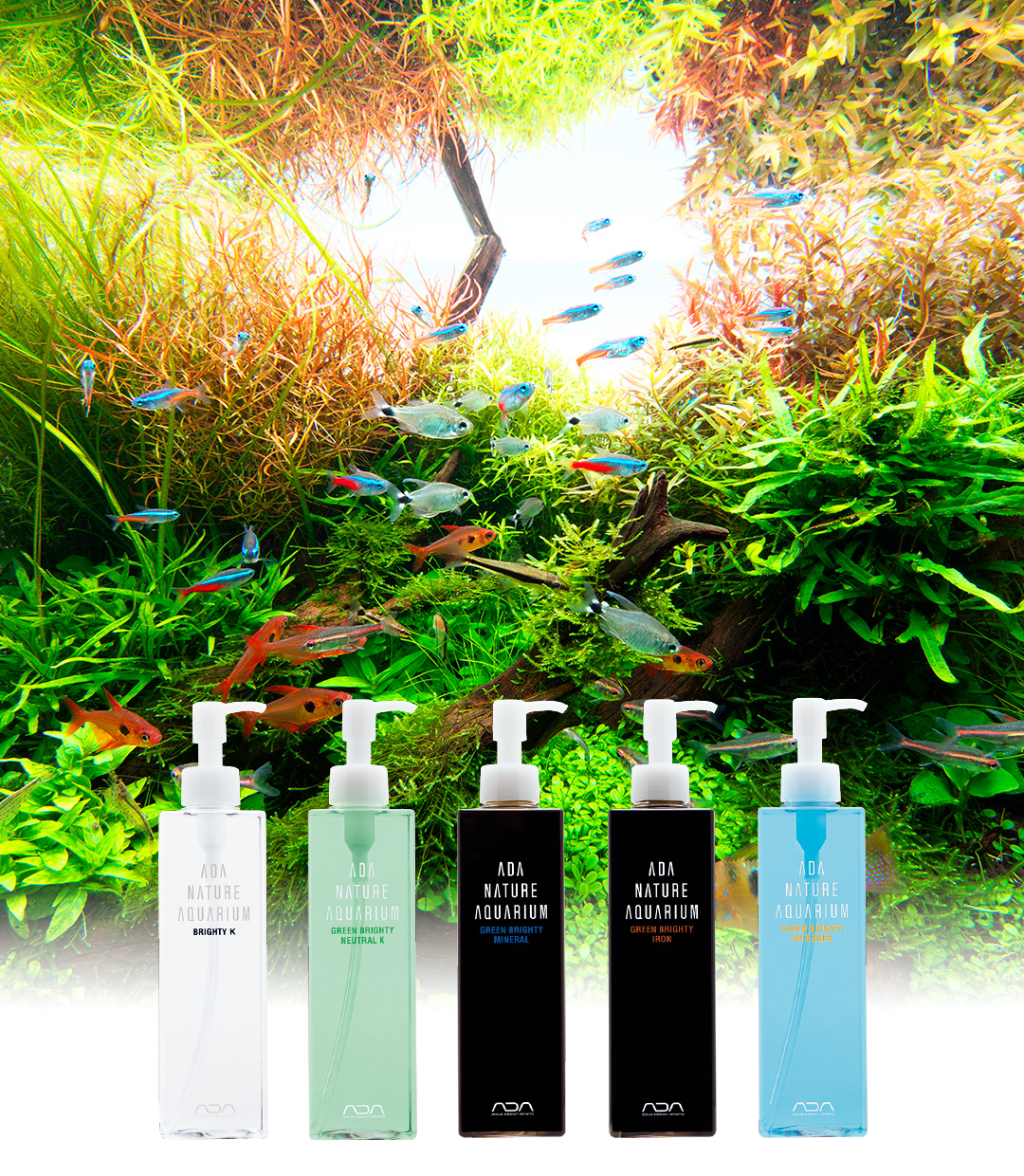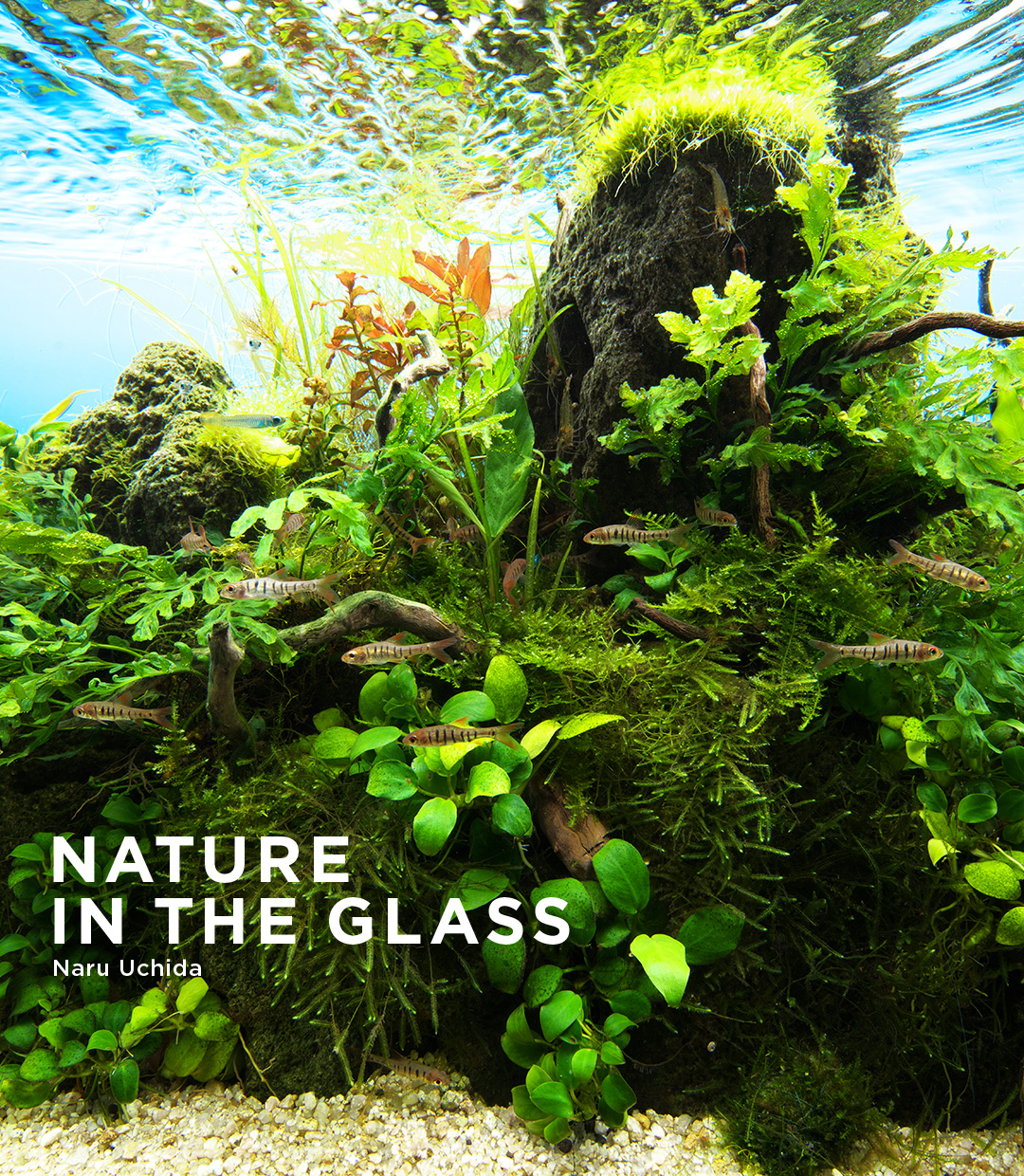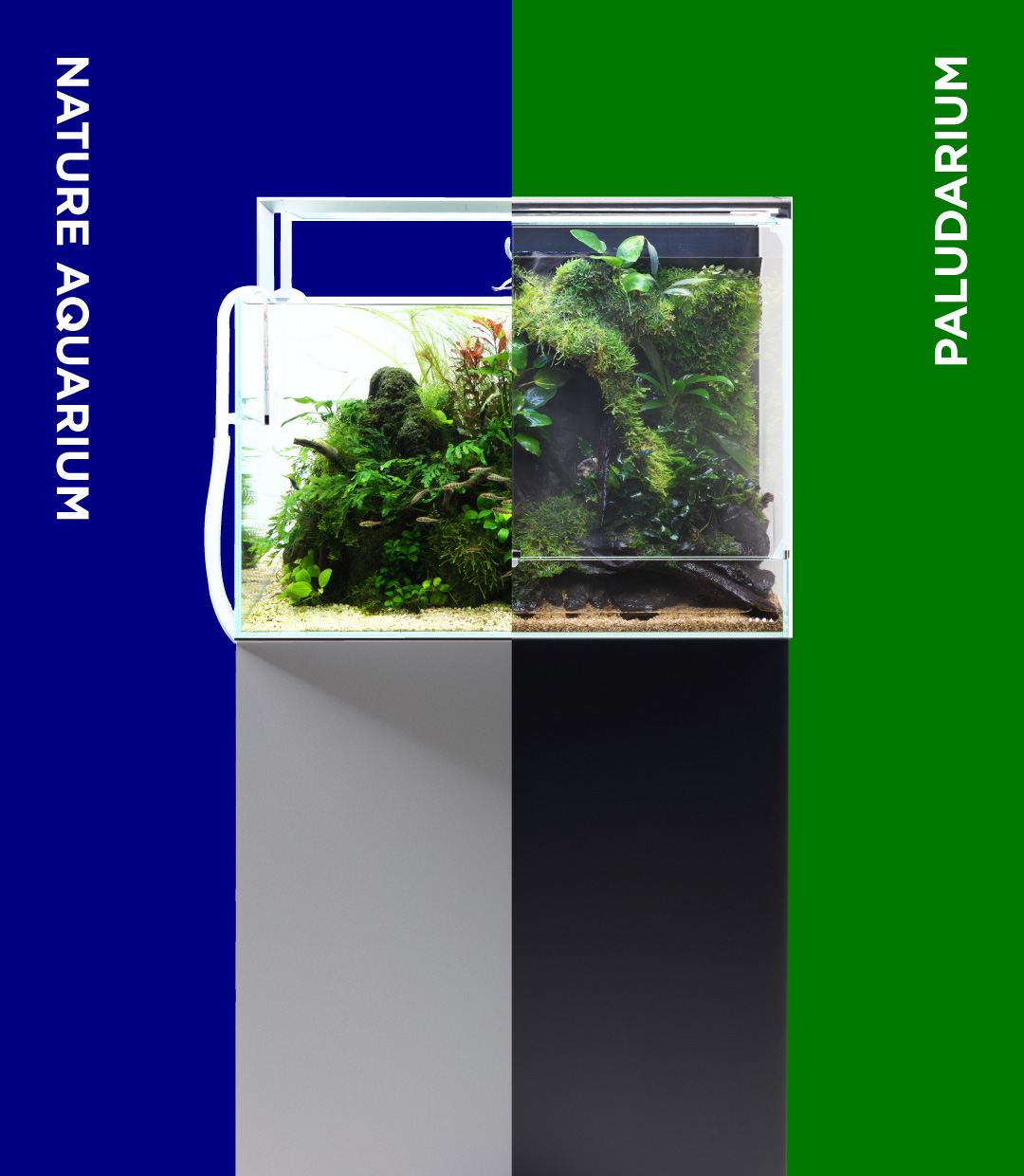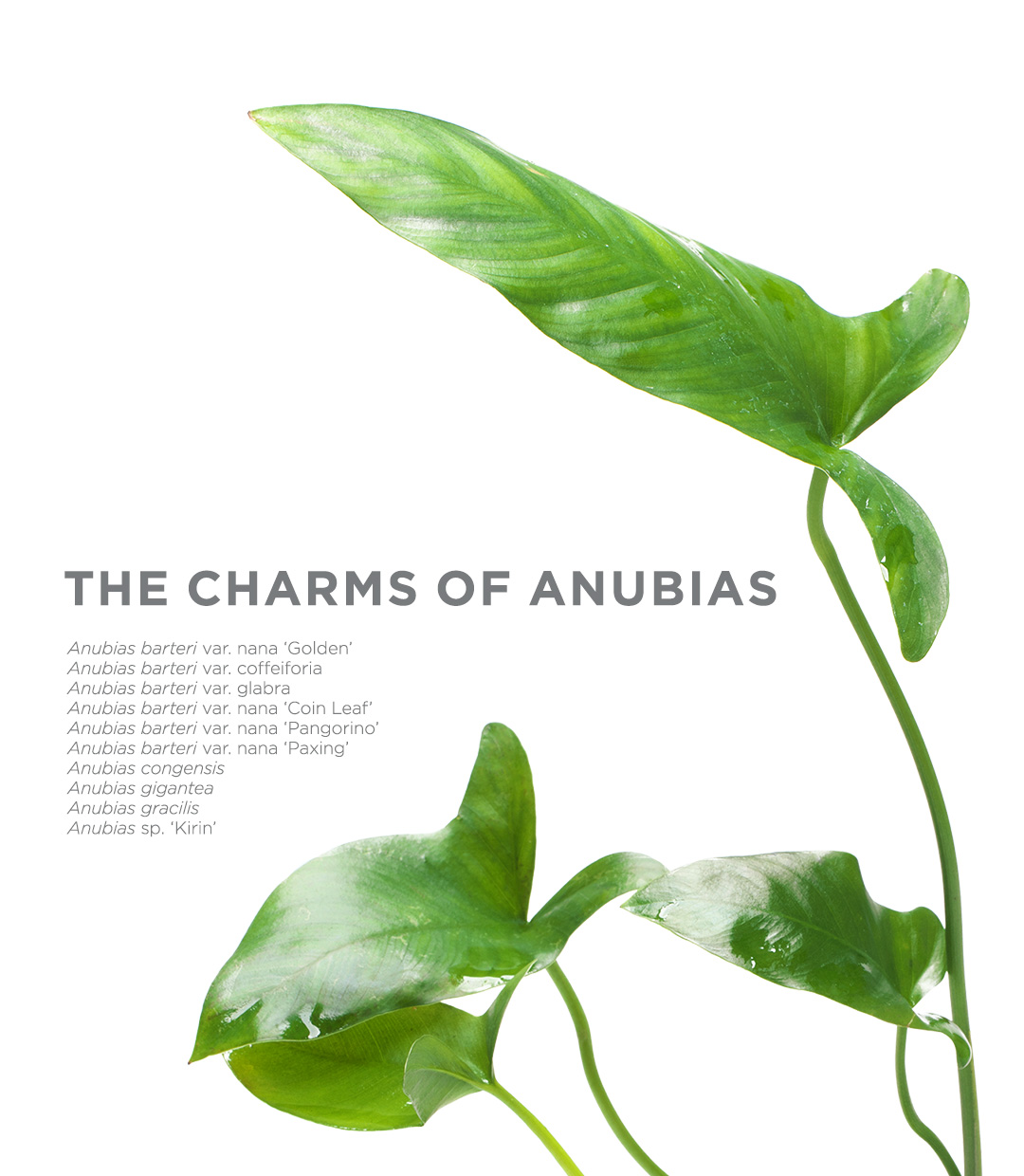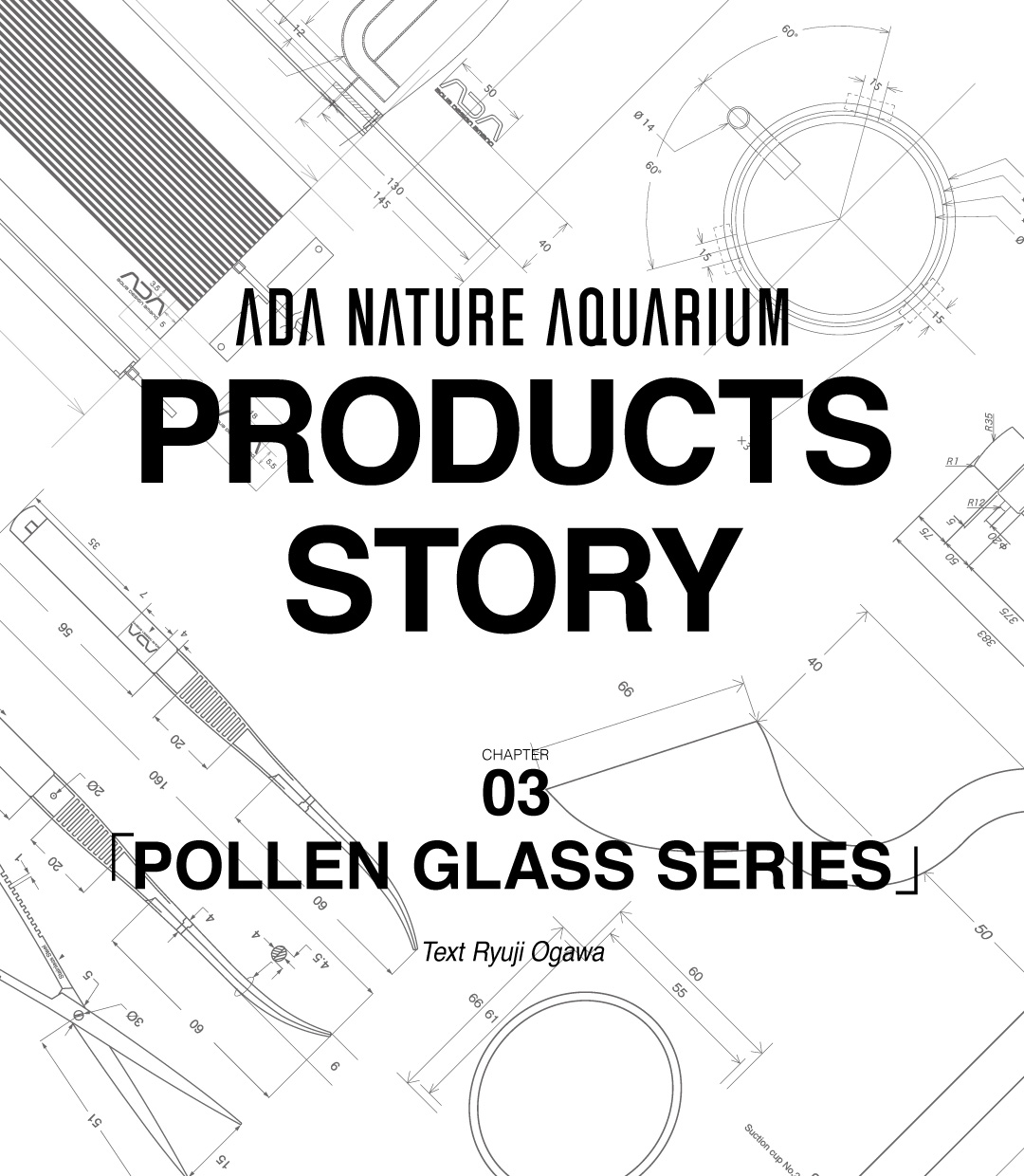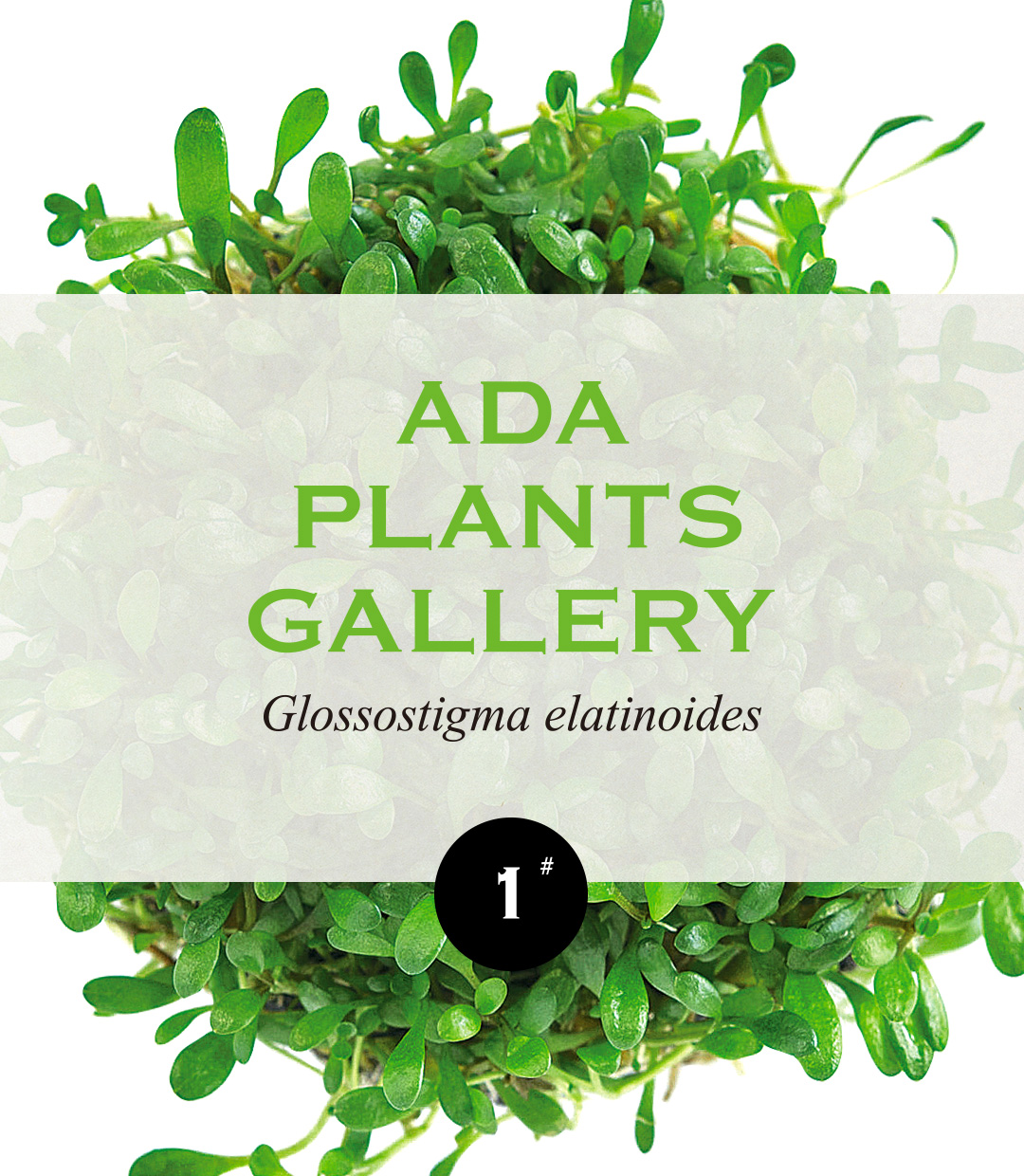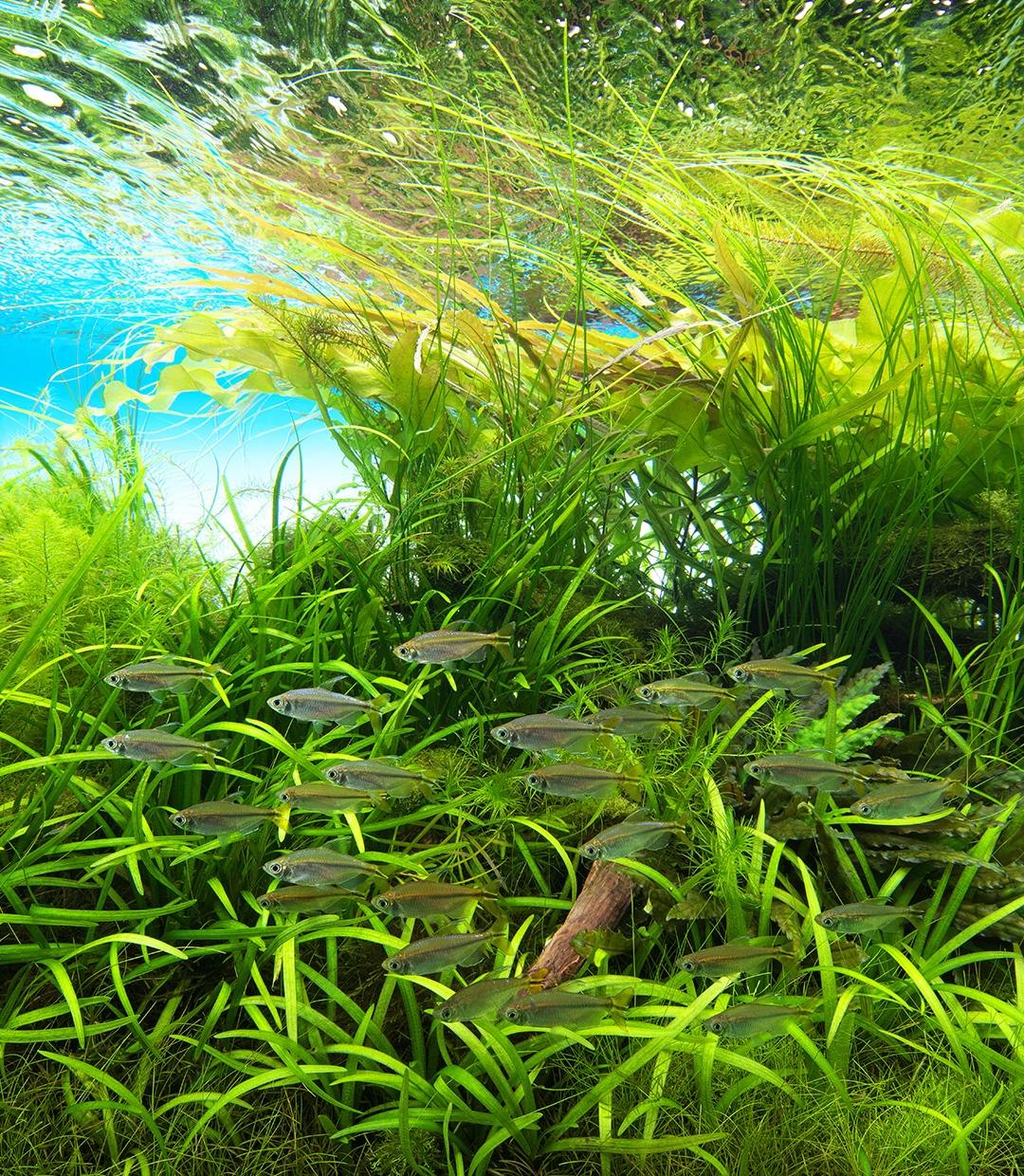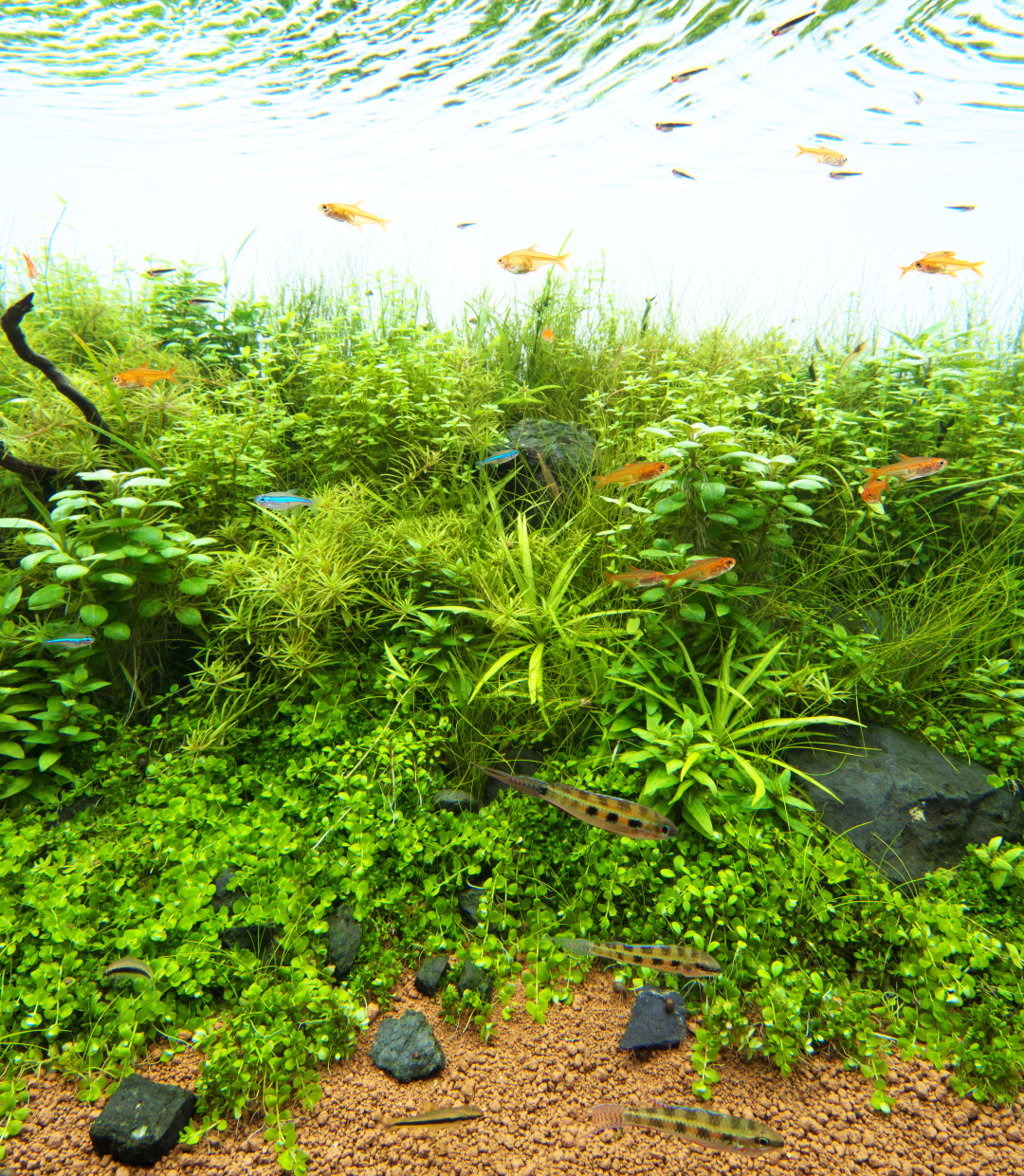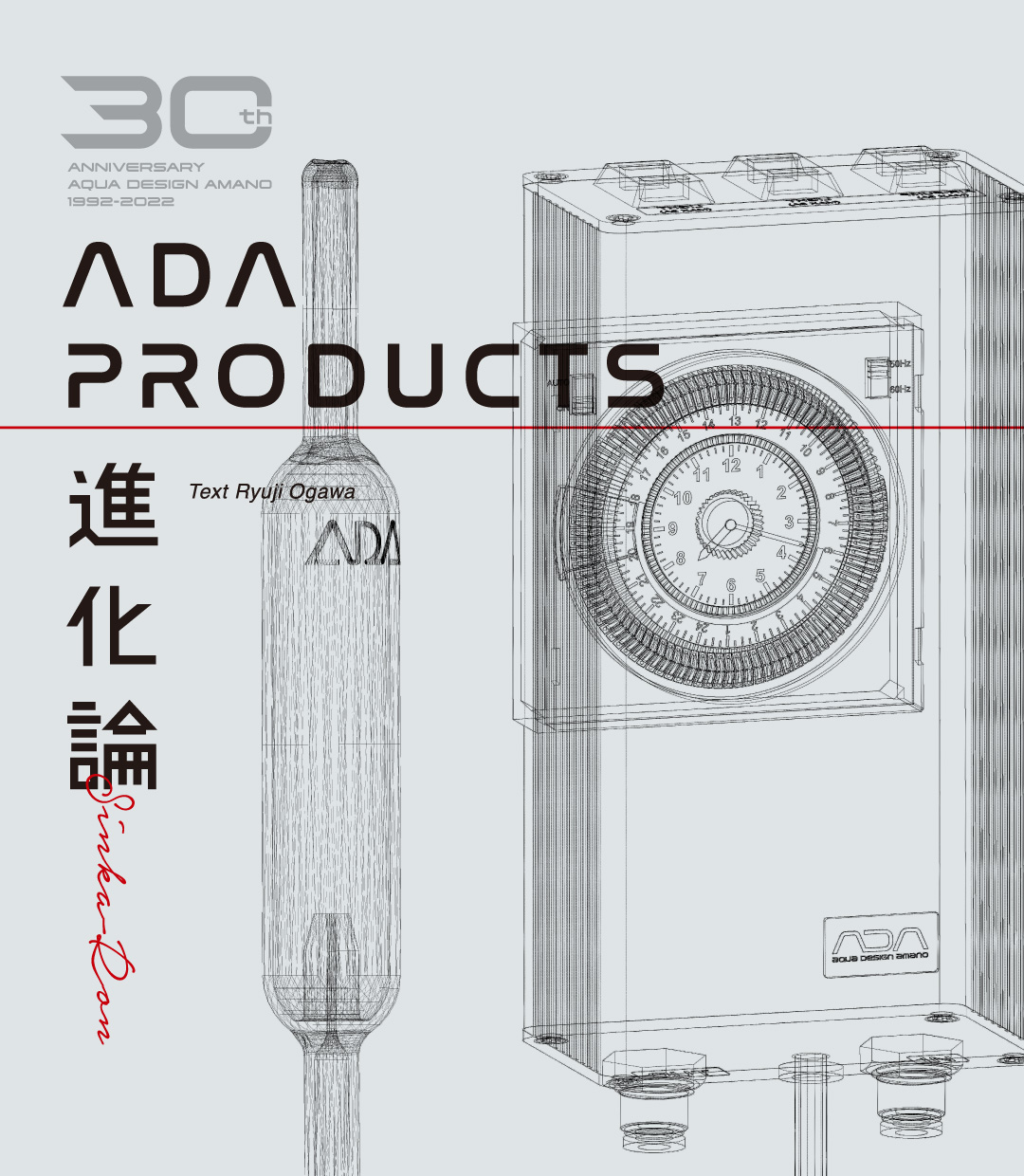NATURE IN THE GLASS ‘Stream in the rainy season’
Imagining a waterside ecosystem that changes depending on the rainfall
Anubias adapts to areas where the water fluctuation level is large while growing. As expressed in the Paludarium layout featured previously in the AJ vol.306, time-course and strength is depicted by moving the field to the underwater for this aquascape. It is a typical convex composition, and I used slightly large Unzan Stones for the aquarium tank size because I wanted to use as many plants as possible in the limited space. For these two layouts, I proceeded the creation while considering the composition and planting so that even if the underwater section and above water section are set upside down, it still makes sense.
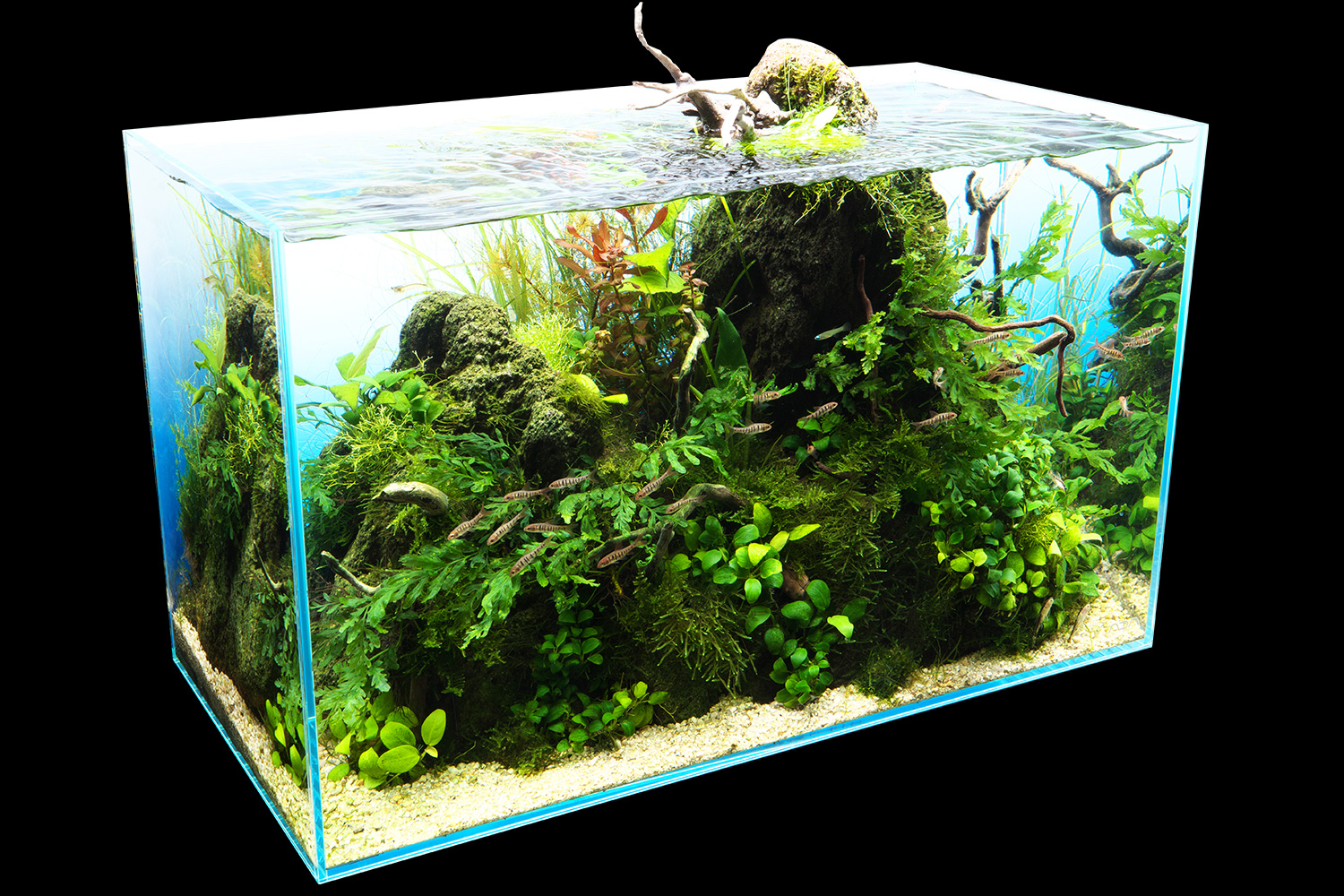
DATA
Shooting date: February 17th, 2021(ADA)
Creator: Naru Uchida
Aquarium: Cube Garden W60×D30×H36(cm)
Lighting: Aquasky RGB 60 x 1, turned on for 9 hours per day
Filter: Super Jet Filter ES-600(Bio Rio G)
Material: Branch Wood, Unzan Stone
Substrate: DOOA Tropical River Sand, Aqua Soil – Amazonia Ver.2, Power Sand Advance S, Bacter100, Clear Super, Tourmaline BC
CO2: Pollen Glass TYPE-3, 2 bubbles per second via CO2 Glass Counter (using Tower)
Aeration: 15 hours after the light is turned off using Lily Pipe P-2
Additives: Green Brighty Neutral K, Green Brighty Mineral
Water change: 1/3 once a week
Water quality: Temperature: 25ºC; pH: 6.4; TH: 50 mg/l
Plant
Anubias barteri var. nana ‘Petite’
Anubias barteri var. nana golden
Anubias barteri var. glabra
Bolbitis heudelotii
Riccia fluitans
Taxiphyllum barbieri
Utricularia graminifolia
Ludwigia glandulosa
Ludwigia senegalensis
Myriophyllum sp.
Echinodorus angustifolius
Eleocharis vivipara
Fish
Barbus fasciolatus
Aplocheilichthys normani
Crossocheilus oblongus
Otocinclus sp.
Caridina multidentata
Shooting date: February 17th, 2021(ADA)
Creator: Naru Uchida
Aquarium: Cube Garden W60×D30×H36(cm)
Lighting: Aquasky RGB 60 x 1, turned on for 9 hours per day
Filter: Super Jet Filter ES-600(Bio Rio G)
Material: Branch Wood, Unzan Stone
Substrate: DOOA Tropical River Sand, Aqua Soil – Amazonia Ver.2, Power Sand Advance S, Bacter100, Clear Super, Tourmaline BC
CO2: Pollen Glass TYPE-3, 2 bubbles per second via CO2 Glass Counter (using Tower)
Aeration: 15 hours after the light is turned off using Lily Pipe P-2
Additives: Green Brighty Neutral K, Green Brighty Mineral
Water change: 1/3 once a week
Water quality: Temperature: 25ºC; pH: 6.4; TH: 50 mg/l
Plant
Anubias barteri var. nana ‘Petite’
Anubias barteri var. nana golden
Anubias barteri var. glabra
Bolbitis heudelotii
Riccia fluitans
Taxiphyllum barbieri
Utricularia graminifolia
Ludwigia glandulosa
Ludwigia senegalensis
Myriophyllum sp.
Echinodorus angustifolius
Eleocharis vivipara
Fish
Barbus fasciolatus
Aplocheilichthys normani
Crossocheilus oblongus
Otocinclus sp.
Caridina multidentata
A world submerged in water is vividly expressed by taking advantage of the characteristics of materials and aquatic plants.
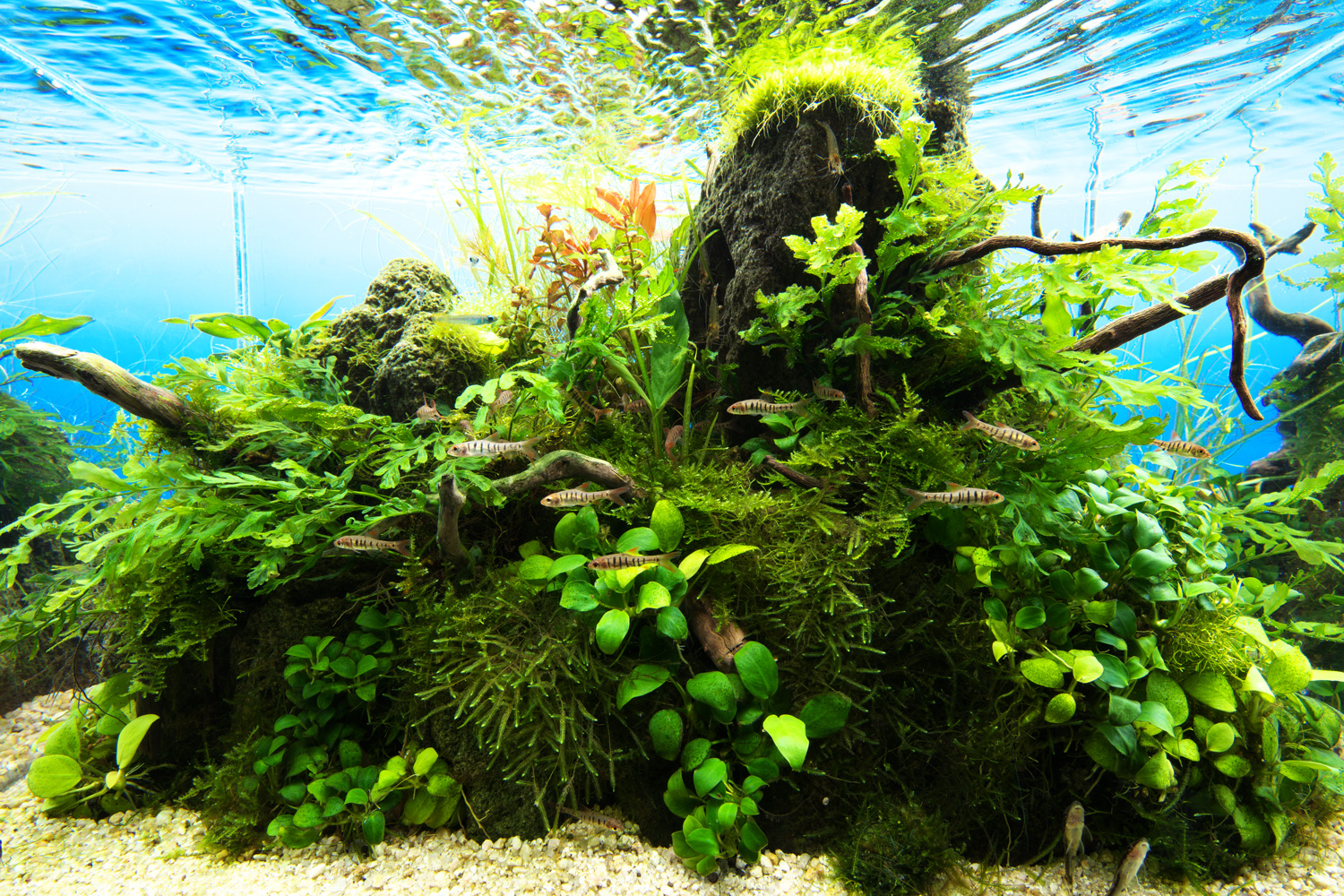
Composition image in mind
I created a composition using a relatively large Unzan Stones compared to the W60cm aquarium tank as if there is an upright Tate-Iwa (standing rock). I made that part as a quay landscape, and created a natural habitat of Anubias where they grow naturally by taking root vigorously. The composition is a typical convex composition, and the way tape-shaped aquatic plants and stem plants are peeking out from the center looks like an Ikebana flower arrangement with stones.
I created a composition using a relatively large Unzan Stones compared to the W60cm aquarium tank as if there is an upright Tate-Iwa (standing rock). I made that part as a quay landscape, and created a natural habitat of Anubias where they grow naturally by taking root vigorously. The composition is a typical convex composition, and the way tape-shaped aquatic plants and stem plants are peeking out from the center looks like an Ikebana flower arrangement with stones.
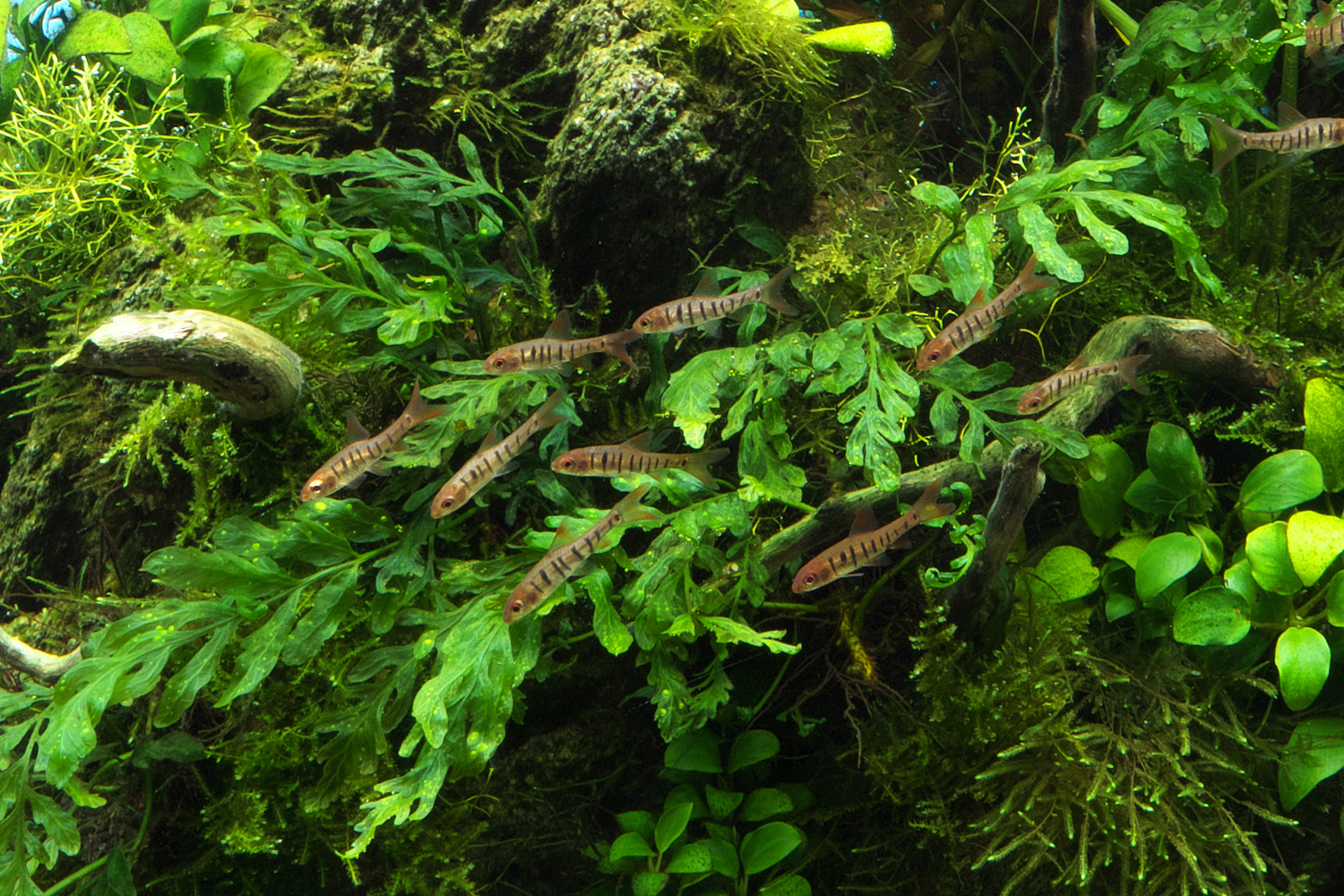
1 . Arranging Bolbitis and Anubias resourcefully
I used Bolbitis heudelotii which is from the same place as Anubias. Although both of them are shade-loving plants (sciophytes), Bolbitis is intentionally placed in the upper section of the aquarium because it needs more light. Leaves of Bolbitis moderately block the light to the bottom, and it helps adjust the amount of light that Anubias prefers. It makes it harder for spot algae that tend to outbreak with high light intensity to grow.
I used Bolbitis heudelotii which is from the same place as Anubias. Although both of them are shade-loving plants (sciophytes), Bolbitis is intentionally placed in the upper section of the aquarium because it needs more light. Leaves of Bolbitis moderately block the light to the bottom, and it helps adjust the amount of light that Anubias prefers. It makes it harder for spot algae that tend to outbreak with high light intensity to grow.
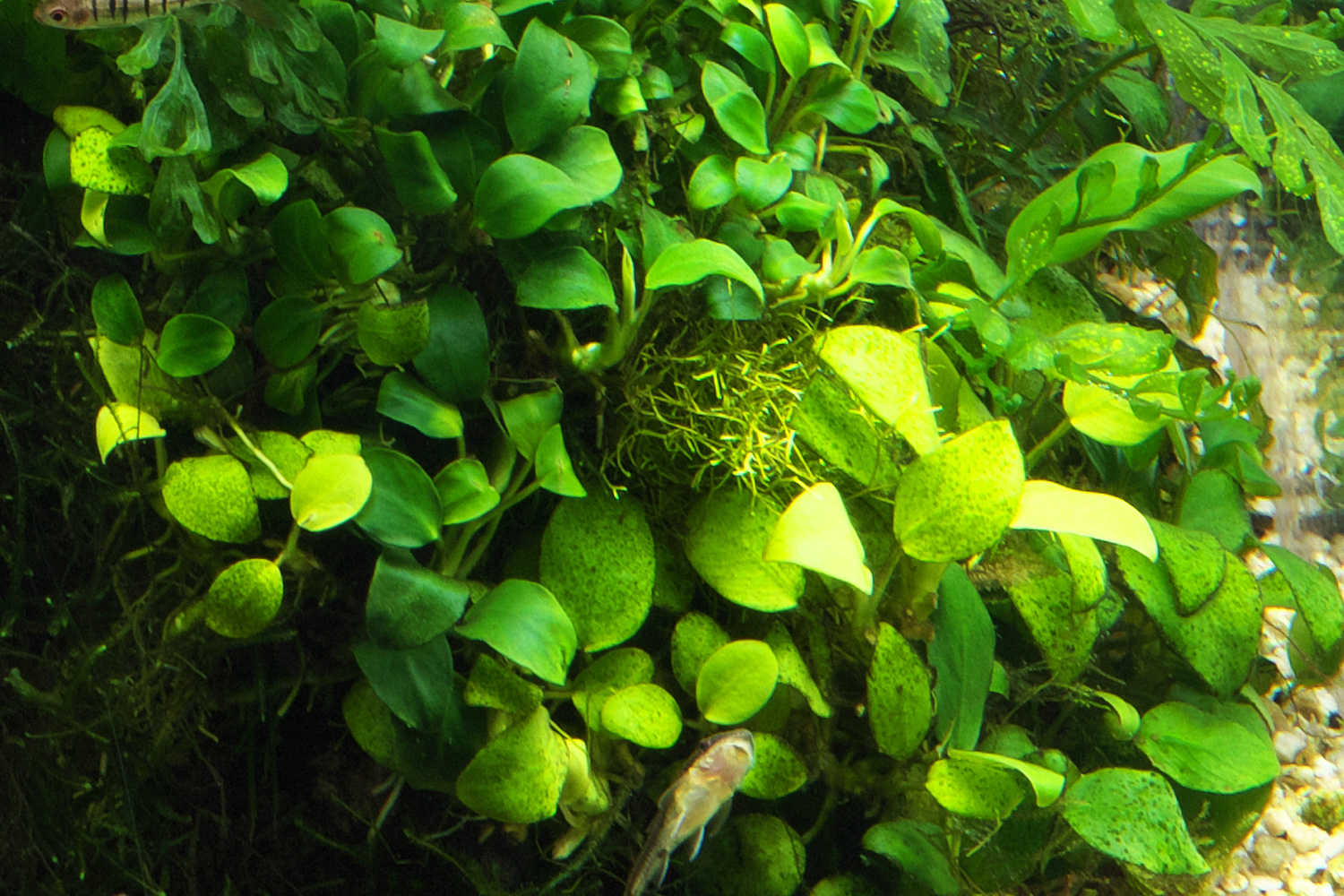
2. Beauty of clustered aquatic plants
For Anubias, natural scenery can be created by planting them in a cluster. And by hiding the bottom of Anubias with Taxiphyllum barbieri, Anubias will be integrated into an aquascape even better, and you can feel the passage of time even more.
For Anubias, natural scenery can be created by planting them in a cluster. And by hiding the bottom of Anubias with Taxiphyllum barbieri, Anubias will be integrated into an aquascape even better, and you can feel the passage of time even more.
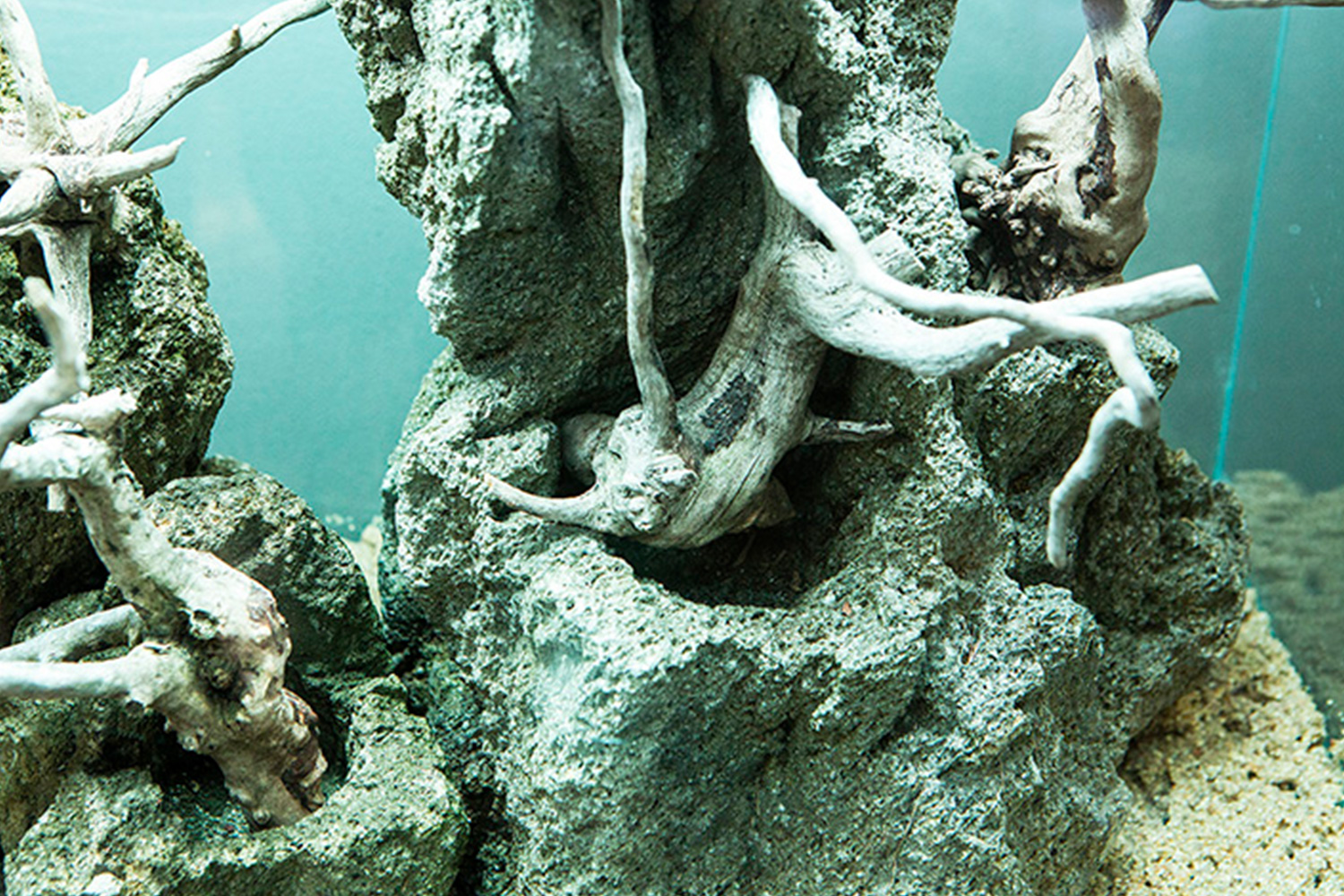
3. Branch Wood and Unzan Stone
By fixing pieces of Branch Wood into pockets unique to Unzan Stone, I was able to create a stable composition.
By fixing pieces of Branch Wood into pockets unique to Unzan Stone, I was able to create a stable composition.
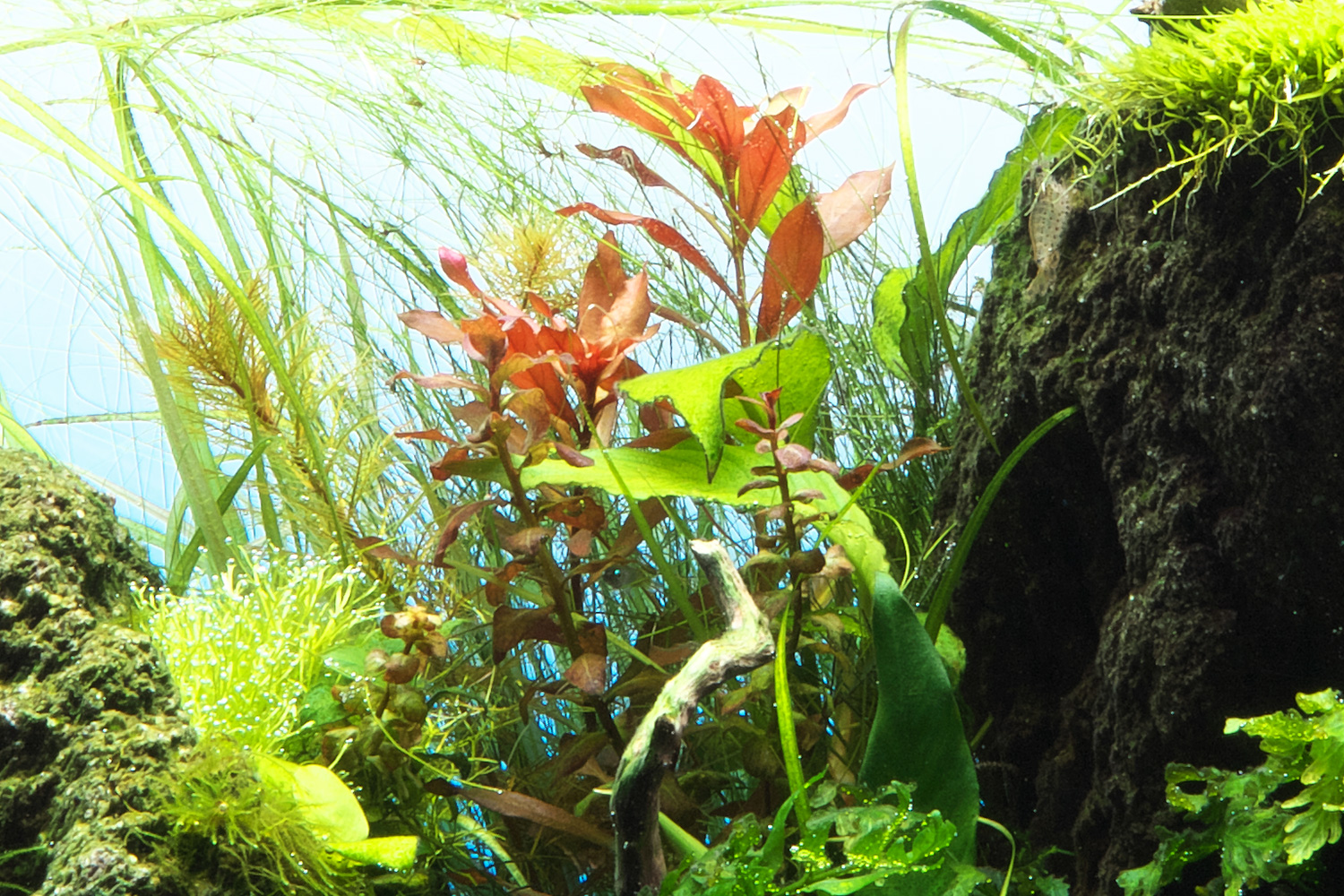
4. Echinodorus angustifolius and Eleocharis vivipara
They are typical tape-shaped aquatic plants that you can visually see gentle water motion. They play a role to soften the powerful look of Unzan Stone effortlessly.
They are typical tape-shaped aquatic plants that you can visually see gentle water motion. They play a role to soften the powerful look of Unzan Stone effortlessly.
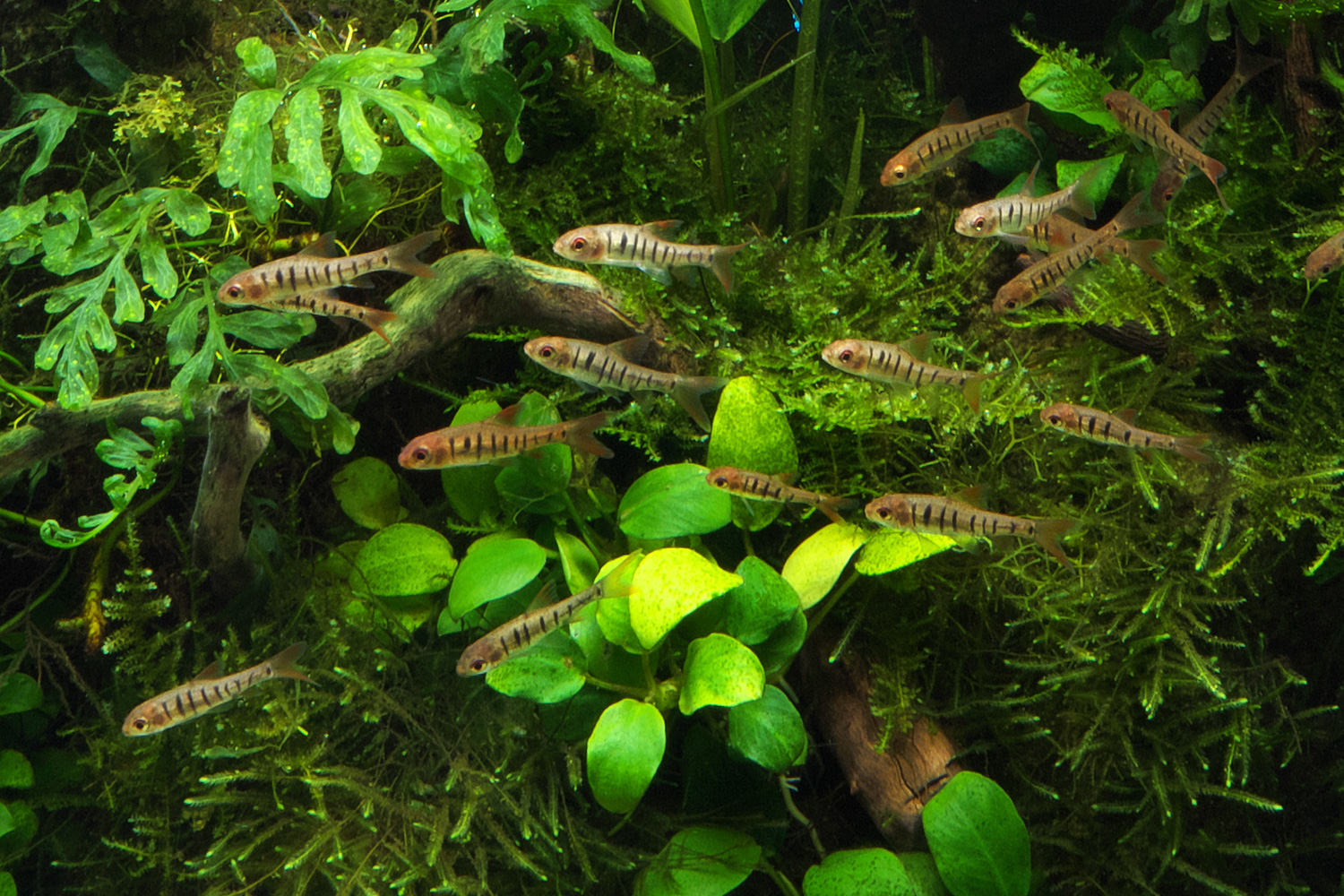
5. Choice of fish to match the natural habitat of aquatic plants
I had Barbus fasciolatus native to Africa in this aquascape. Although the combination of aquatic plants and fish from the same habitat created a natural harmony, there weren’t enough in this aquascape.
I had Barbus fasciolatus native to Africa in this aquascape. Although the combination of aquatic plants and fish from the same habitat created a natural harmony, there weren’t enough in this aquascape.
ADA products that bring out expressing and maintenance abilities
In an aquascape with a lot of aquatic plants including Anubias, there is a gradual growth rhythm in the aquarium tank. Planting and maintenance based on the time needed for the plants to flourish, is required. Highly specialized layout tools are useful for the series of planting and maintenance tasks. Handle the tasks while being considerate of rhythms that aquatic plants have.
【Anubias barteri var. nana ‘Petite’】
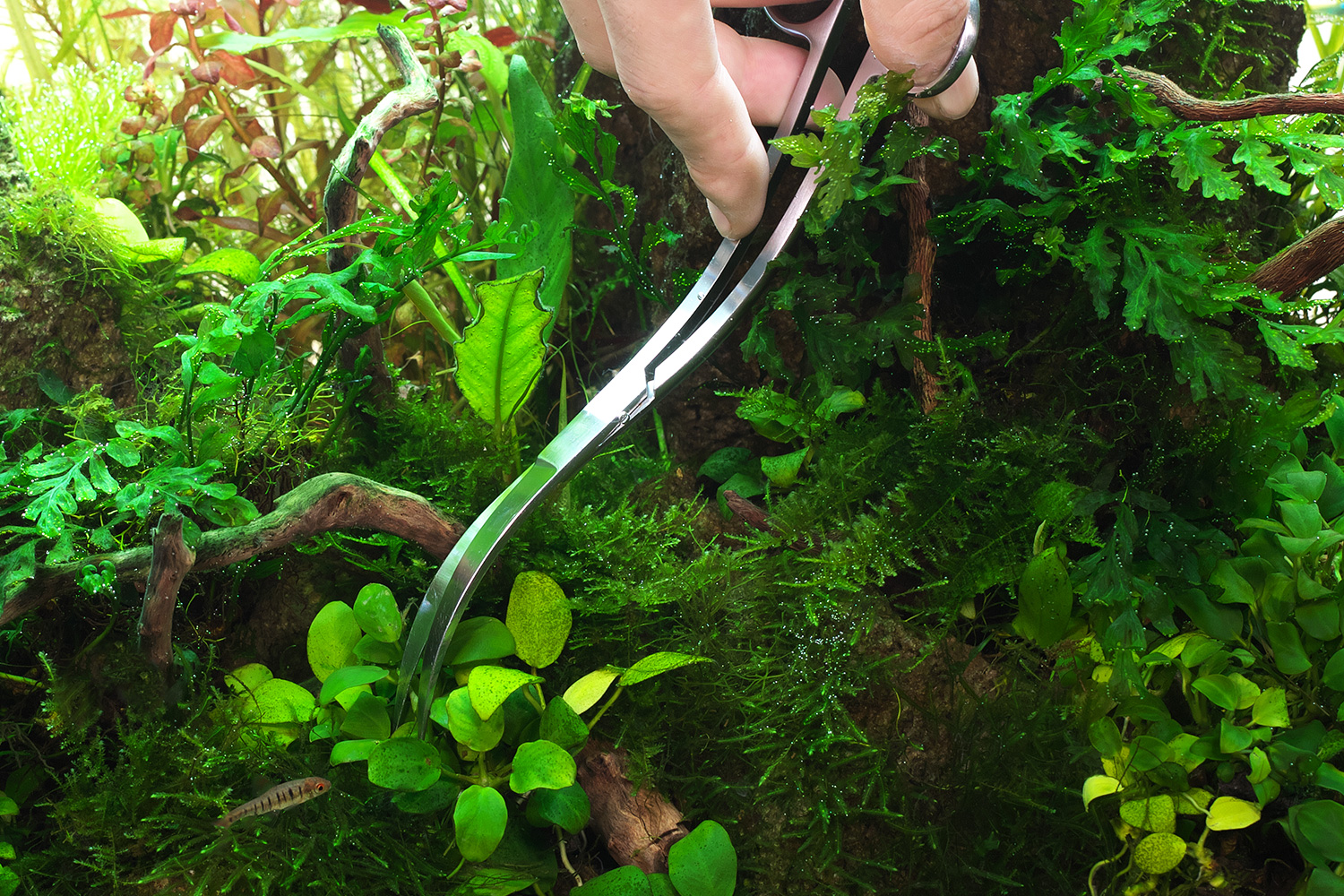
Usefulness of streamlined shape
For Anubias which is an epiphytic shade-loving plant, when having Anubias grow on driftwood or stones while taking advantage of its characteristics, a powerful look and a distinctive atmosphere that makes us feel the passage of time, are given to the aquascape. Because the main maintenance task for Anubias would be picking old leaves, Pro Scissors Wave came in handy for the cutting task. Its distinctive elongated streamlined shape enables us to cut old leaves even in narrow gaps of stones and pieces of driftwood comfortably. And depending on where Anubias were, I turned the Pro Scissors over and held while changing the angle of the blade edge when I did the cutting task. The curved blades work just right to reach the base of the petioles completely and cut the old leaves. These accurate cuts helped maintain the Anubias in a healthy condition.
For Anubias which is an epiphytic shade-loving plant, when having Anubias grow on driftwood or stones while taking advantage of its characteristics, a powerful look and a distinctive atmosphere that makes us feel the passage of time, are given to the aquascape. Because the main maintenance task for Anubias would be picking old leaves, Pro Scissors Wave came in handy for the cutting task. Its distinctive elongated streamlined shape enables us to cut old leaves even in narrow gaps of stones and pieces of driftwood comfortably. And depending on where Anubias were, I turned the Pro Scissors over and held while changing the angle of the blade edge when I did the cutting task. The curved blades work just right to reach the base of the petioles completely and cut the old leaves. These accurate cuts helped maintain the Anubias in a healthy condition.
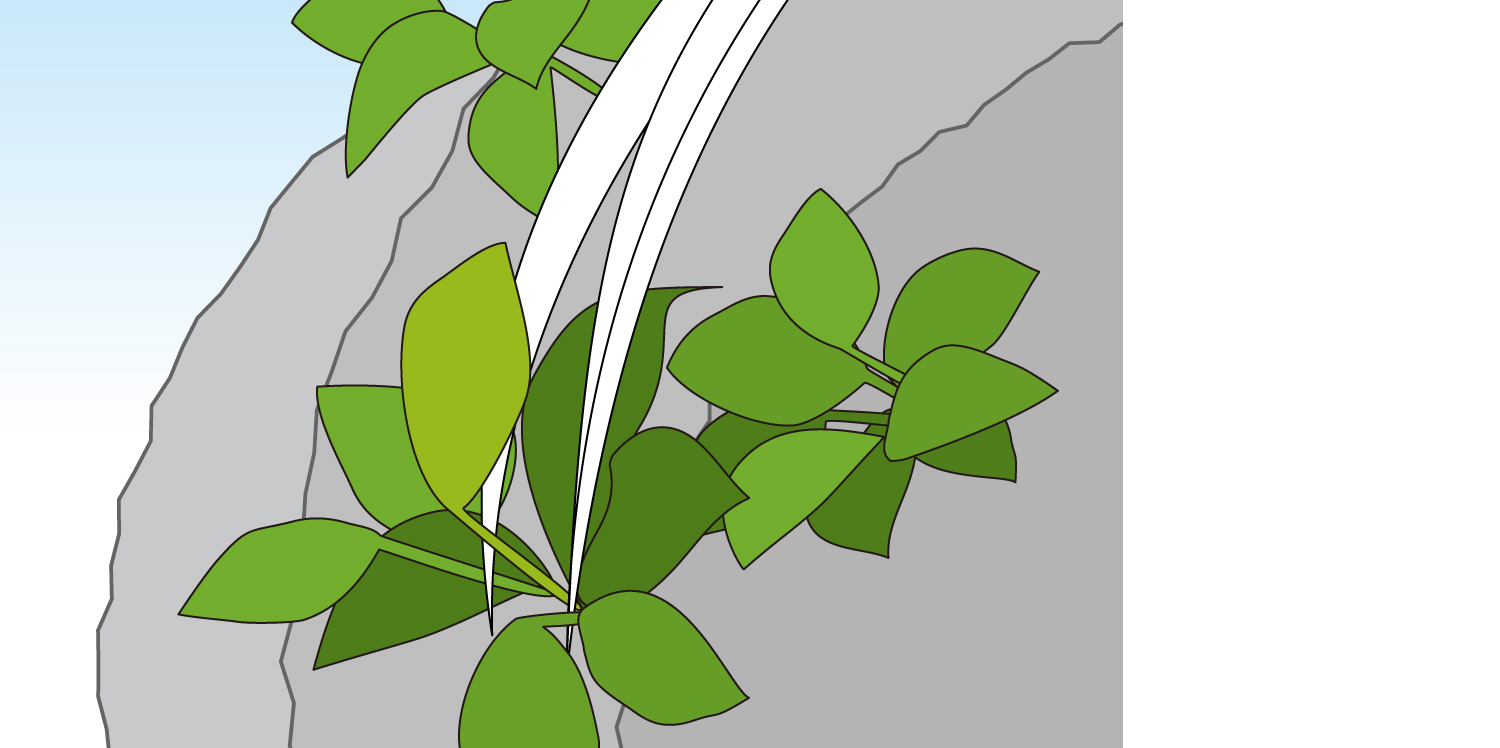
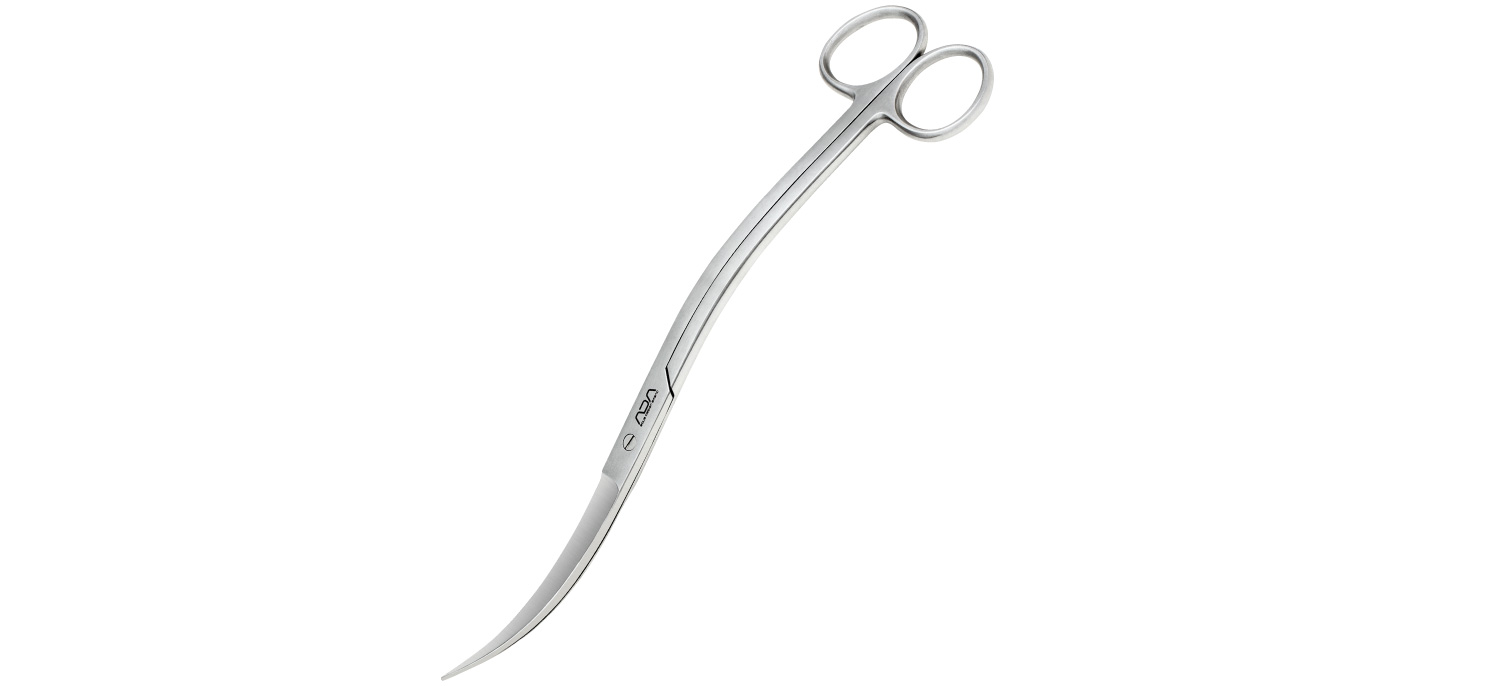
Pro Scissors Wave
Just like their appearance, the best feature is its streamlined shape. It is an exceptional tool with high design and functionality.
Just like their appearance, the best feature is its streamlined shape. It is an exceptional tool with high design and functionality.
【Bolbitis heudelotii 】
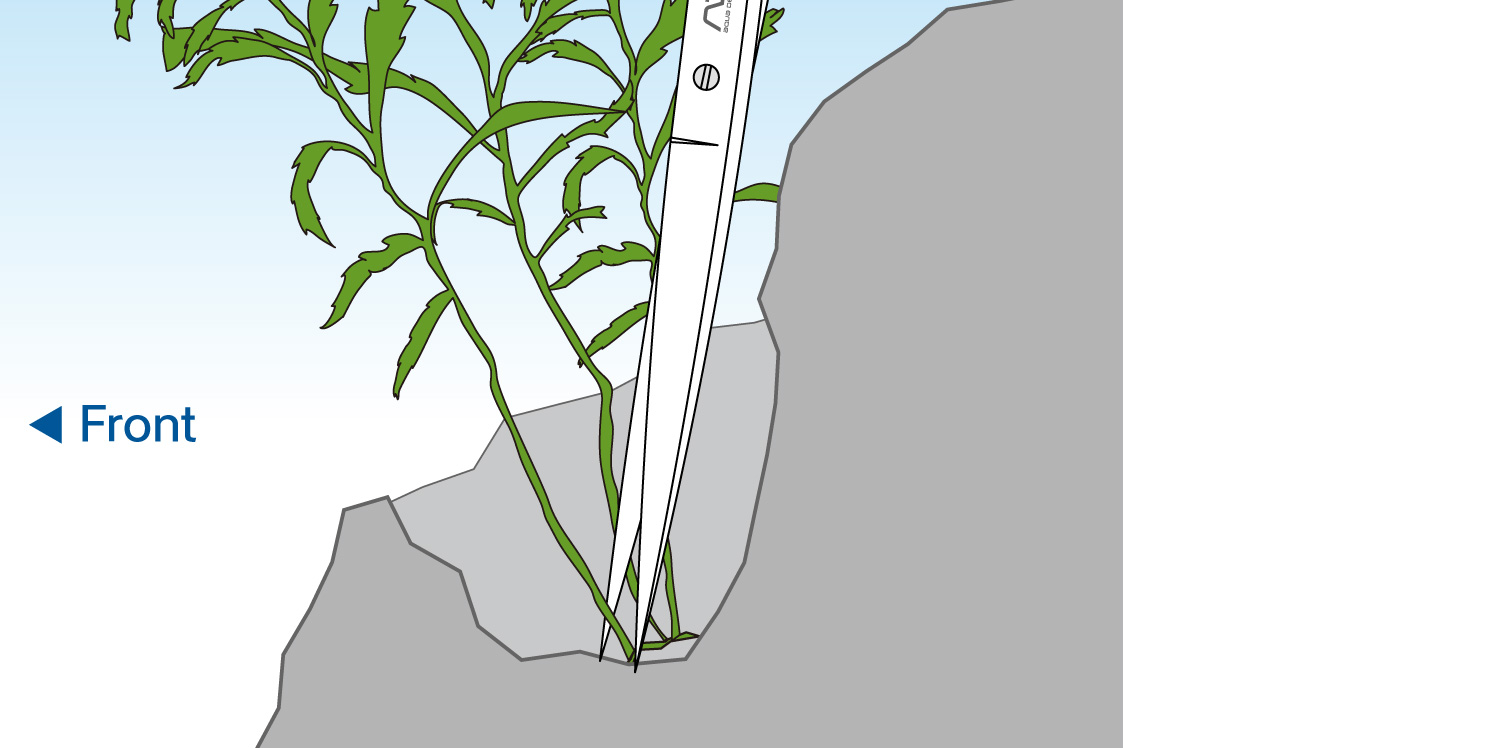
Selecting optimal tools
In order to make the distinctive clear leaves of Bolbitis unfold, it is important to cut old leaves of Bolbitis in a timely manner and always promote the development of new leaves. Pro Scissors M that has long handles were optimal for cutting old leaves of Bolbitis that have taken root in hollows of Unzan Stone. Because of its slender body shape with 305mm in total length, it is easy for Pro Scissors M to reach inside hollows of Unzan Stone. And if it’s a W60cm aquarium tank, cutting tasks can be completed from the front while checking. By choosing the most suitable size from the Pro Scissors lineup while thinking about the aquarium tank size and composition balance, the maintenance tasks can be completed more smoothly. Let’s immerse ourselves in the work with sharp Pro Scissors.
In order to make the distinctive clear leaves of Bolbitis unfold, it is important to cut old leaves of Bolbitis in a timely manner and always promote the development of new leaves. Pro Scissors M that has long handles were optimal for cutting old leaves of Bolbitis that have taken root in hollows of Unzan Stone. Because of its slender body shape with 305mm in total length, it is easy for Pro Scissors M to reach inside hollows of Unzan Stone. And if it’s a W60cm aquarium tank, cutting tasks can be completed from the front while checking. By choosing the most suitable size from the Pro Scissors lineup while thinking about the aquarium tank size and composition balance, the maintenance tasks can be completed more smoothly. Let’s immerse ourselves in the work with sharp Pro Scissors.
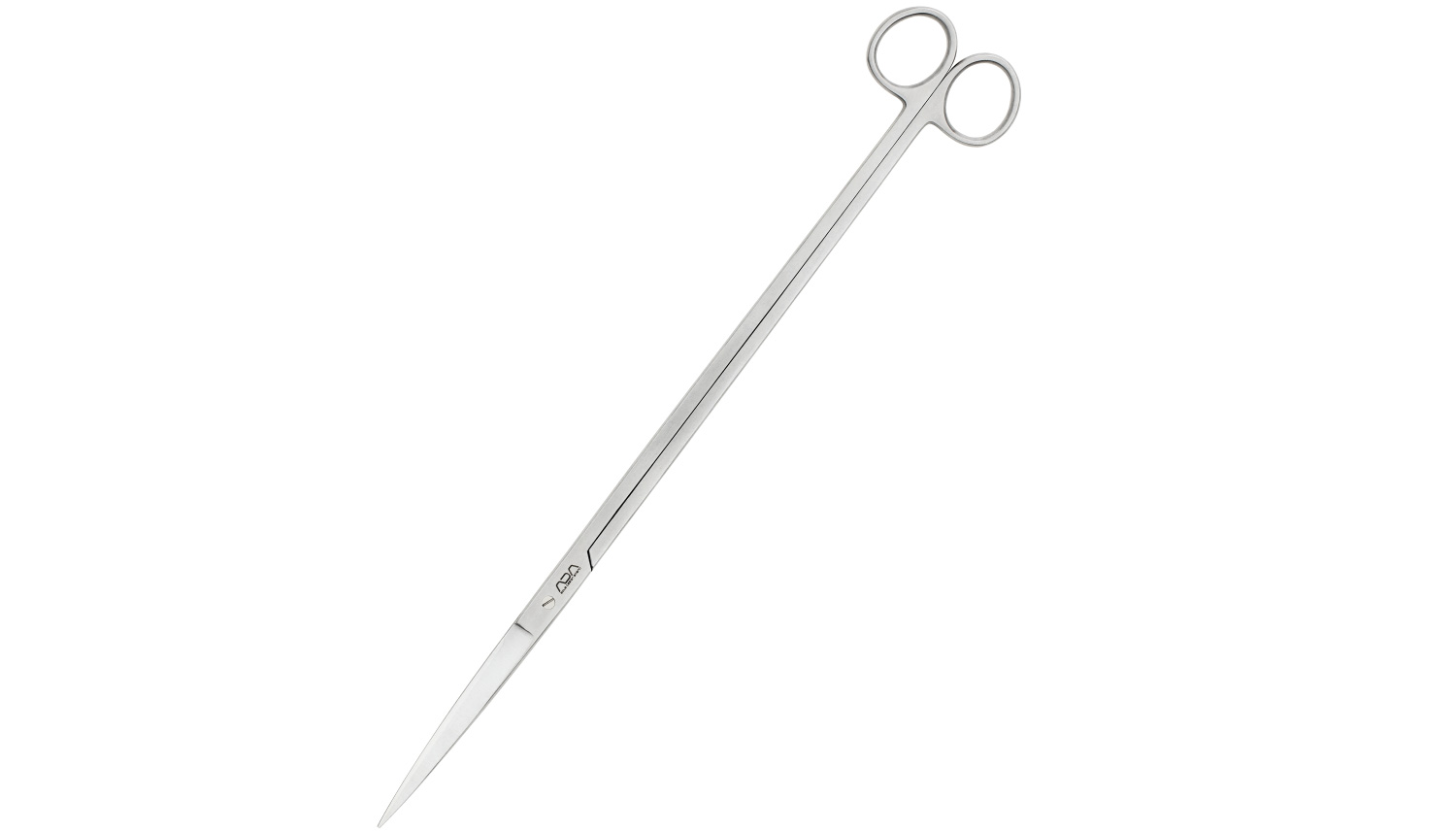
Pro Scissors M
Because of its slender body, it is easy to control the blades precisely and to cut old leaves.
Because of its slender body, it is easy to control the blades precisely and to cut old leaves.
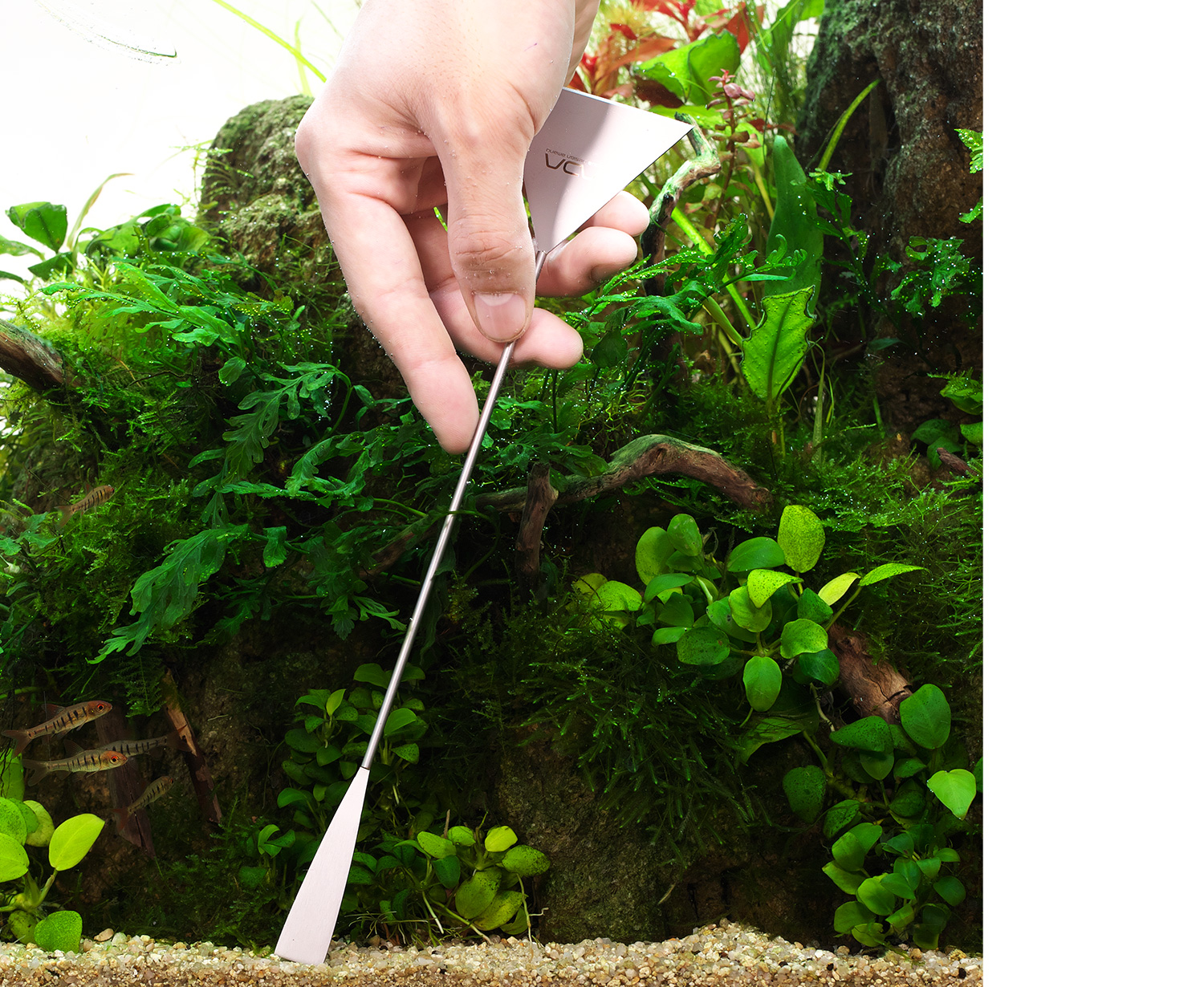
Foreground that affects impressions of aquascape
The front substrate line of aquarium has a great influence on the aquascape impression. In this aquascape featured in the article, cosmetic sand is spread in front of the Unzan Stone. It is because I wanted to give a bright impression and add sharpness to the aquascape while securing space in the foreground. The front line of the cosmetic sand should be kept as flat as possible to emphasize the impression as a flat surface and to make the aquascape look spacious. The Unzan Stone that I used was slightly larger than I wanted, and I had to level the sand in the narrow space. But Sand Flatter was very useful in that situation. Because the amount of cosmetic sand was small, when the aquarium became noticeably dirty, I cleaned it by taking out the sand with a hose as well as the aquarium water. When spreading cosmetic sand again after washing it, because it was a narrow place, I used the smaller end of Sand Flatter for the task. And it was easy to collect the sand and level it.
The front substrate line of aquarium has a great influence on the aquascape impression. In this aquascape featured in the article, cosmetic sand is spread in front of the Unzan Stone. It is because I wanted to give a bright impression and add sharpness to the aquascape while securing space in the foreground. The front line of the cosmetic sand should be kept as flat as possible to emphasize the impression as a flat surface and to make the aquascape look spacious. The Unzan Stone that I used was slightly larger than I wanted, and I had to level the sand in the narrow space. But Sand Flatter was very useful in that situation. Because the amount of cosmetic sand was small, when the aquarium became noticeably dirty, I cleaned it by taking out the sand with a hose as well as the aquarium water. When spreading cosmetic sand again after washing it, because it was a narrow place, I used the smaller end of Sand Flatter for the task. And it was easy to collect the sand and level it.
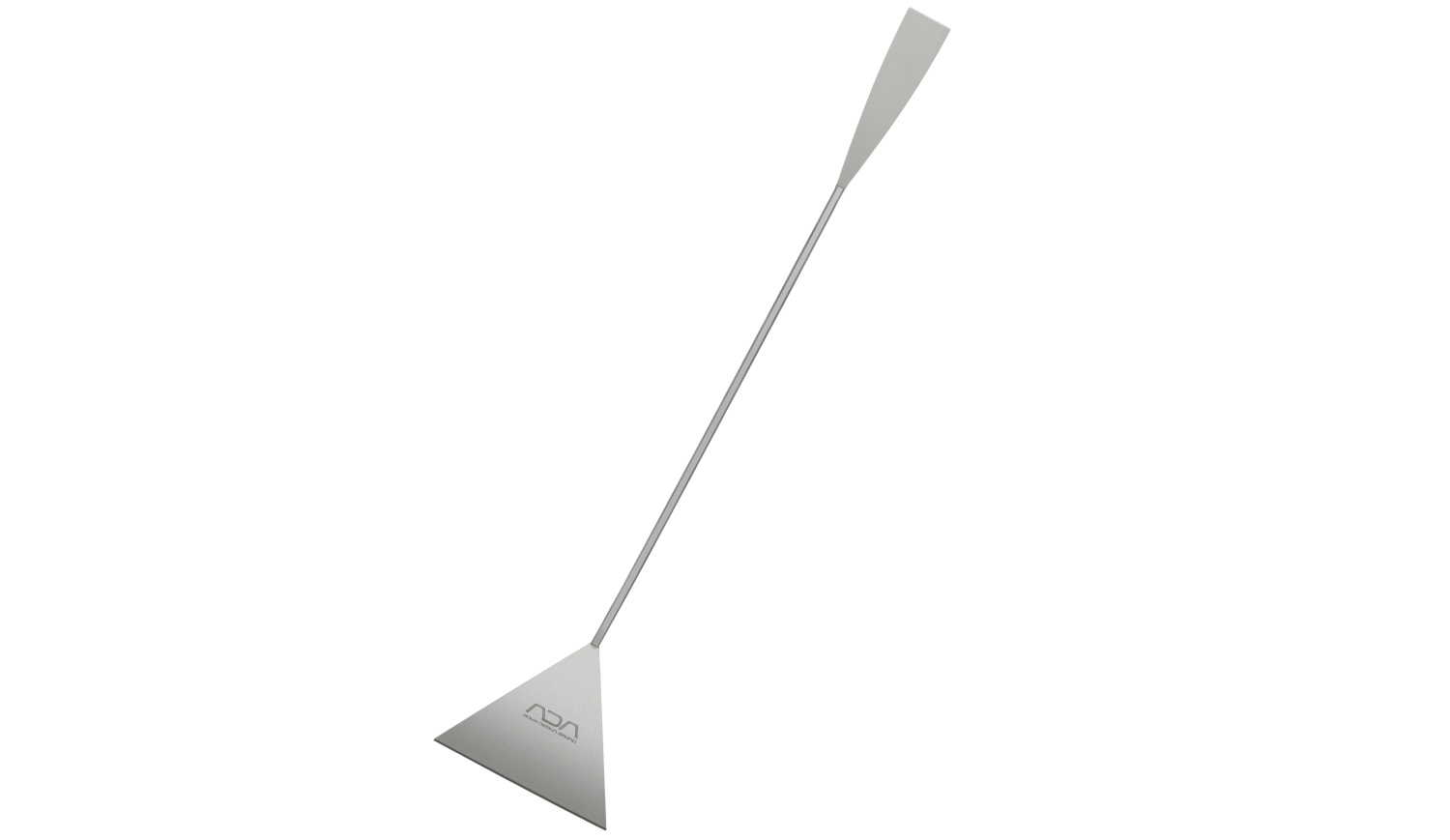
Sand Flatter
By properly using small and large ends, substrate can be neatly leveled from a wide part to a crowded narrow part.
By properly using small and large ends, substrate can be neatly leveled from a wide part to a crowded narrow part.
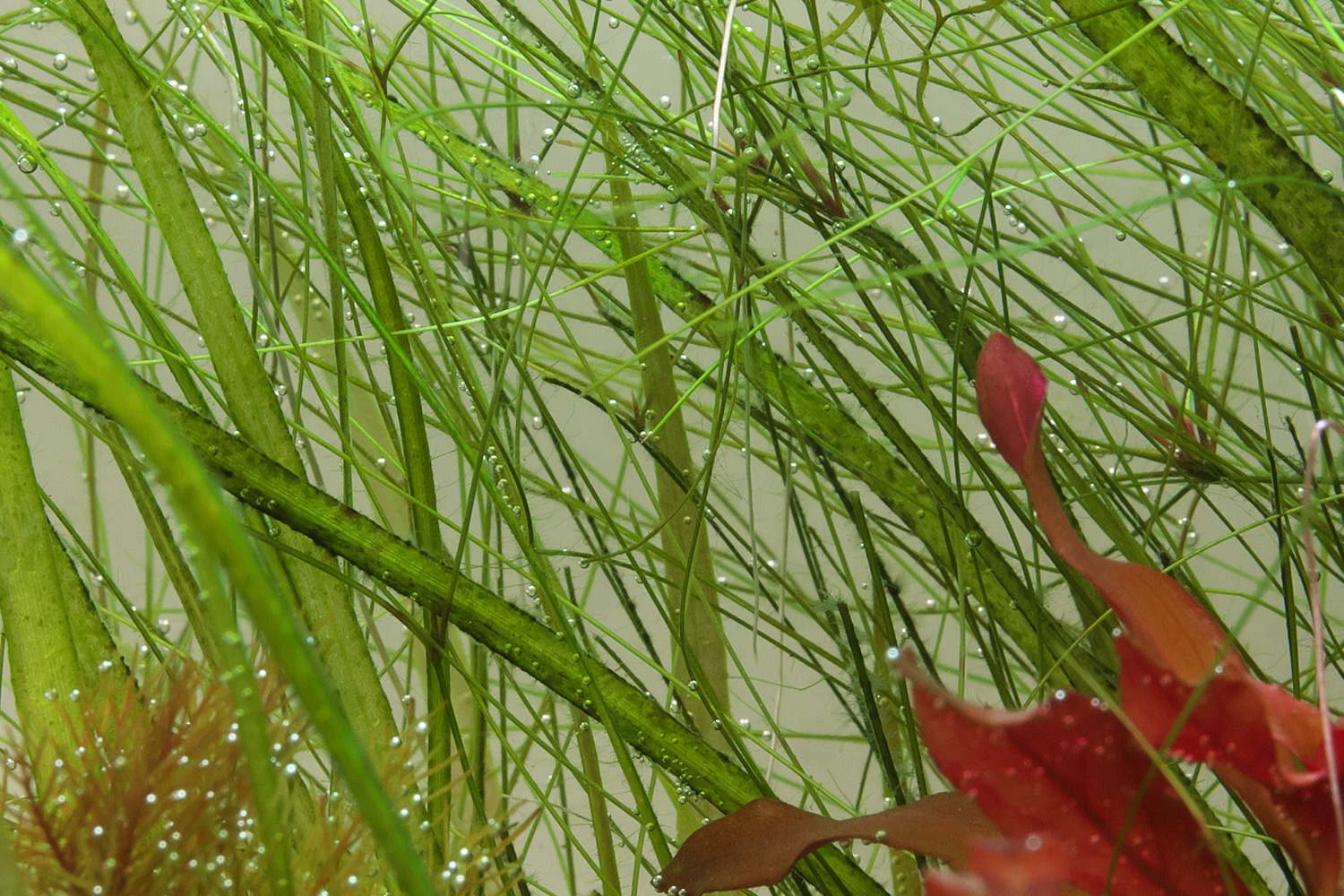
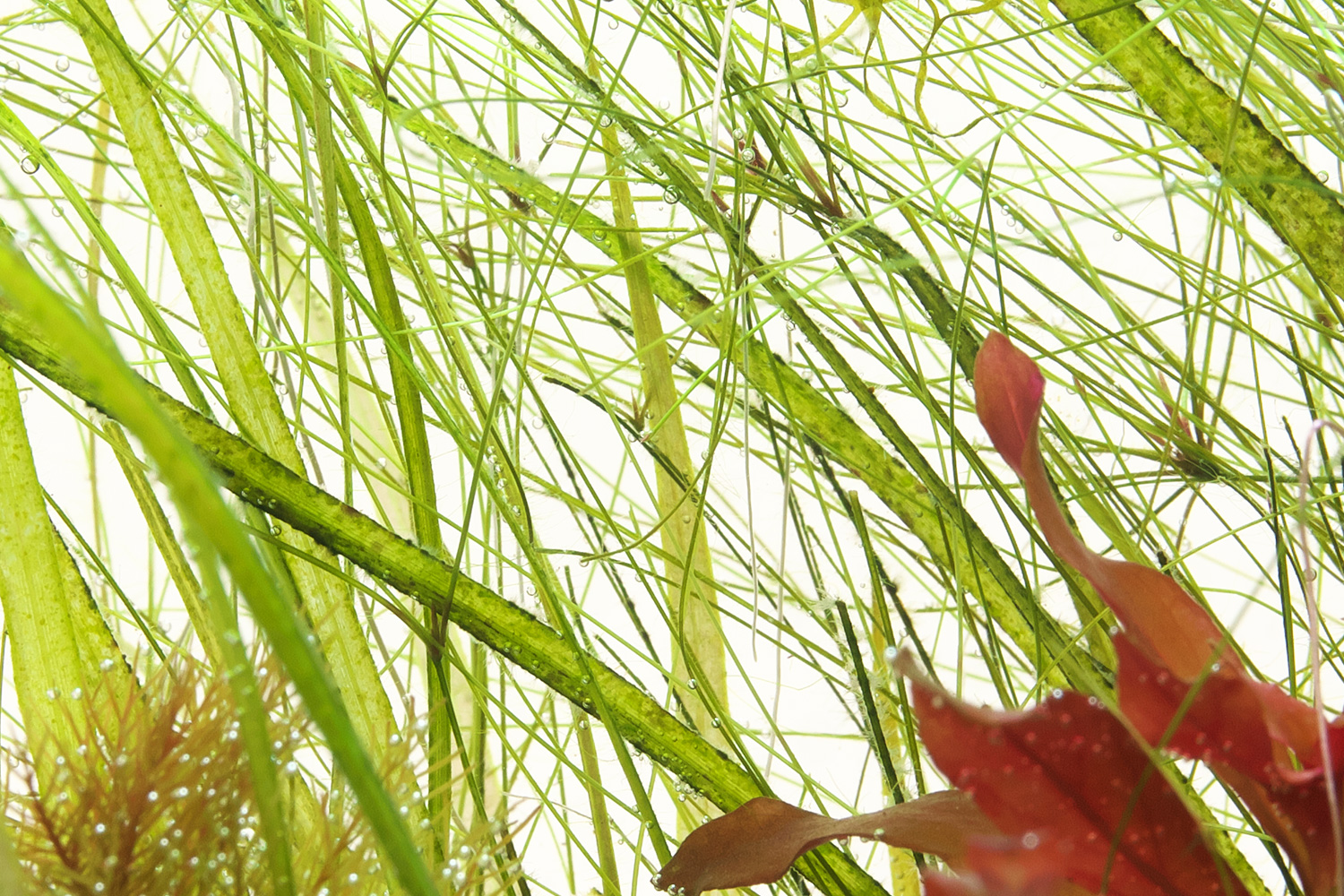
Making silhouettes stand out
Light Screen is a product aimed at an aquascape rendition for a photo shoot and visual improvement. Luminescence from the back can be useful even for the usual maintenance. Depending on the transmitted light, the appearances of aquatic plants are exposed, and it becomes possible for us to precisely check how algae develop or if there are any old leaves. It is because the shadows become clearer when looking at the aquascape from the front. As a result, it becomes easier for us to check even the balance of a composition and aquatic plants. For example, in the aquascape introduced earlier, when lighting Eleocharis vivipara, the base of fine viviparous buds that develop on the tips of the plant, emerges while being illuminated by the light. As a result, the picking up task becomes easier. Moreover, because it was easy to check the density and height, it became easy to make the maintenance schedule after that, which led to the long-term maintenance. And for Echinodorus angustifolius, conditions of the leaves can be checked at a glance because of the clear body. Consequently, it became possible to treat old leaves without missing any, and the task can be easily performed.
Light Screen is a product aimed at an aquascape rendition for a photo shoot and visual improvement. Luminescence from the back can be useful even for the usual maintenance. Depending on the transmitted light, the appearances of aquatic plants are exposed, and it becomes possible for us to precisely check how algae develop or if there are any old leaves. It is because the shadows become clearer when looking at the aquascape from the front. As a result, it becomes easier for us to check even the balance of a composition and aquatic plants. For example, in the aquascape introduced earlier, when lighting Eleocharis vivipara, the base of fine viviparous buds that develop on the tips of the plant, emerges while being illuminated by the light. As a result, the picking up task becomes easier. Moreover, because it was easy to check the density and height, it became easy to make the maintenance schedule after that, which led to the long-term maintenance. And for Echinodorus angustifolius, conditions of the leaves can be checked at a glance because of the clear body. Consequently, it became possible to treat old leaves without missing any, and the task can be easily performed.
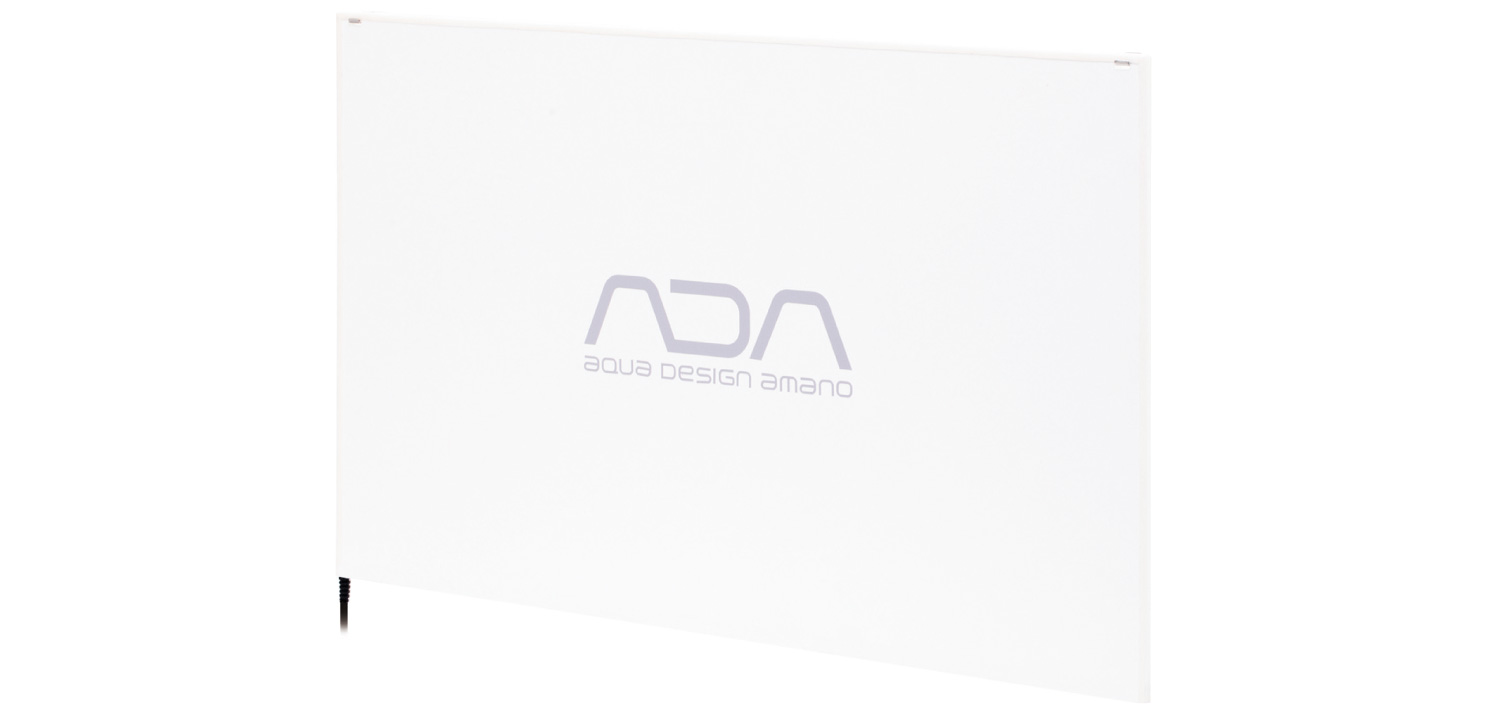
Light Screen 60
By emitting light from the back with LED lights, a white background can be easily created. It is essential for a beautiful aquascape.
By emitting light from the back with LED lights, a white background can be easily created. It is essential for a beautiful aquascape.


